
Along Route 66 just outside Amarillo, TX is one of America’s most interesting art installations: Cadillac Ranch. You can see it from the freeway: what the heck is that?
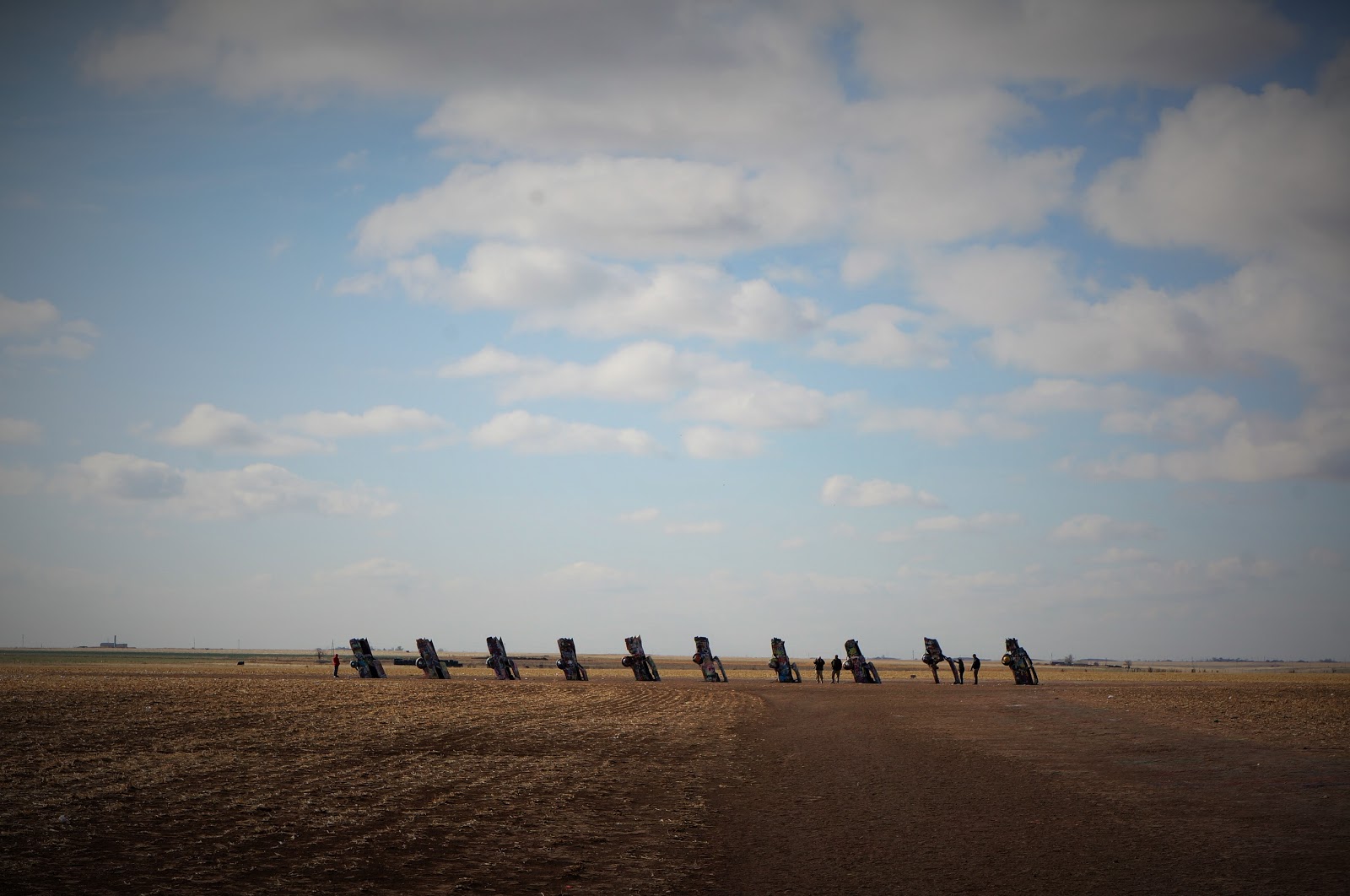
Invented in 1974 by a group of San Francisco hippies (let the stereotypes abound!) called the Ant Farm, they wanted to create something that would “baffle the locals.” Mission accomplished!
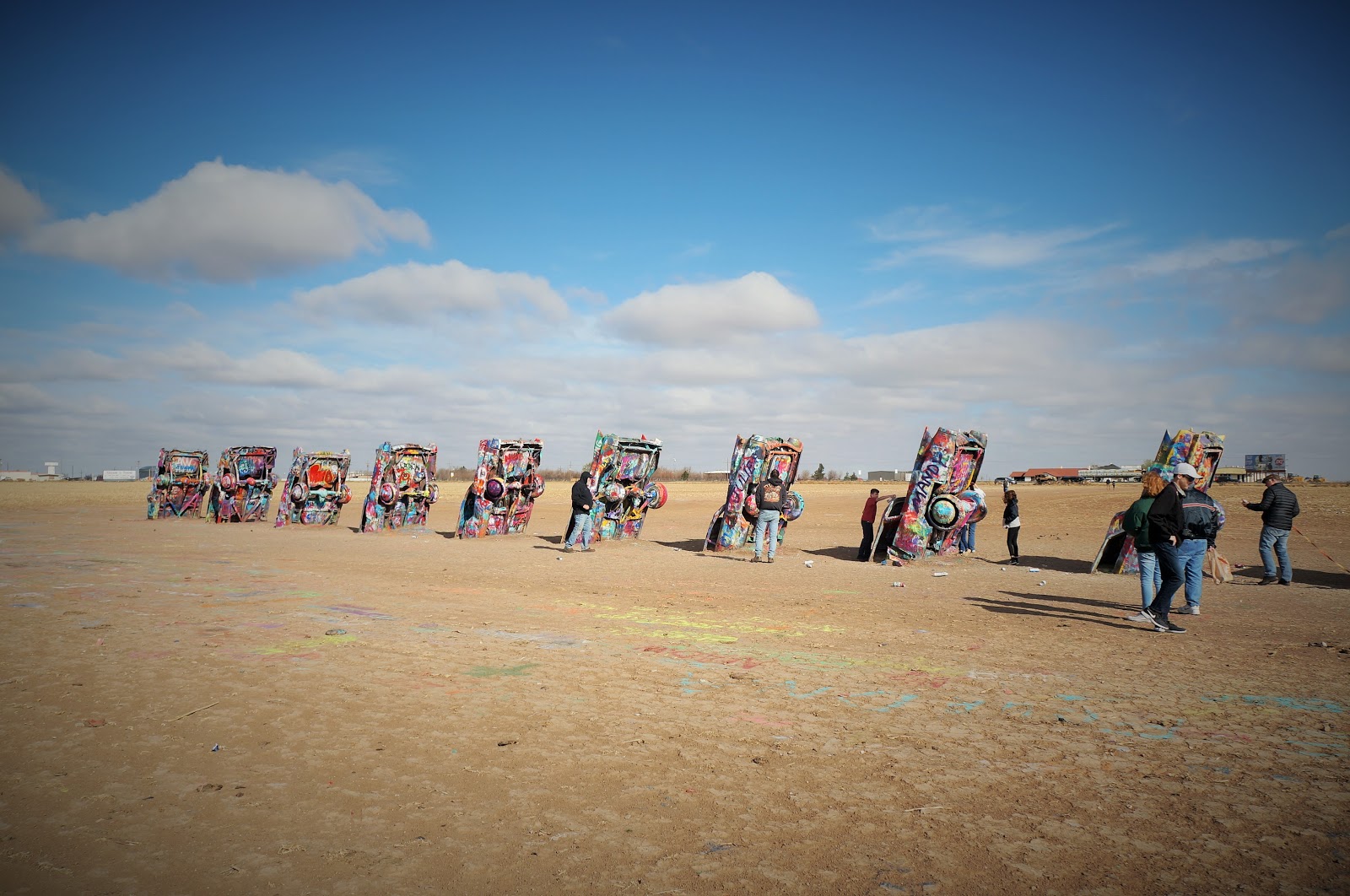
They found an Amarillo billionaire with a big piece of empty land to spare, and half-buried ten Cadillacs nose down in the ground, supposedly at the same angle as the Great Pyramid of Giza. The cars went in order of the changing evolution of the tail fin on the Cadillac, from 1949 Club Sedan to 1963 Sedan de Ville.

Of course, as soon as it was installed, people started to deface it with spray paint and rip off pieces of the cars as souvenirs.
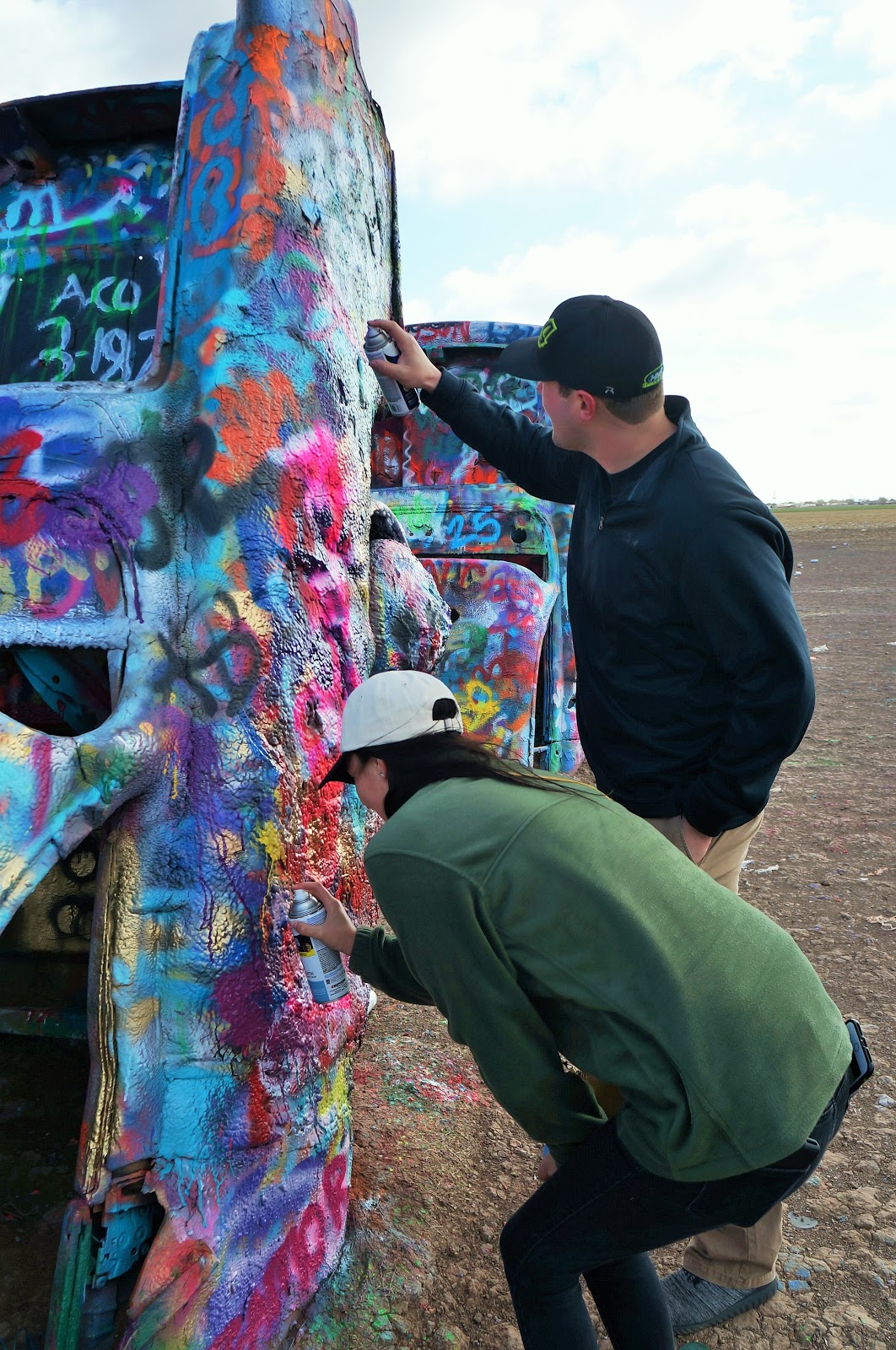
The artists were delighted! People were INTERACTING with their art!
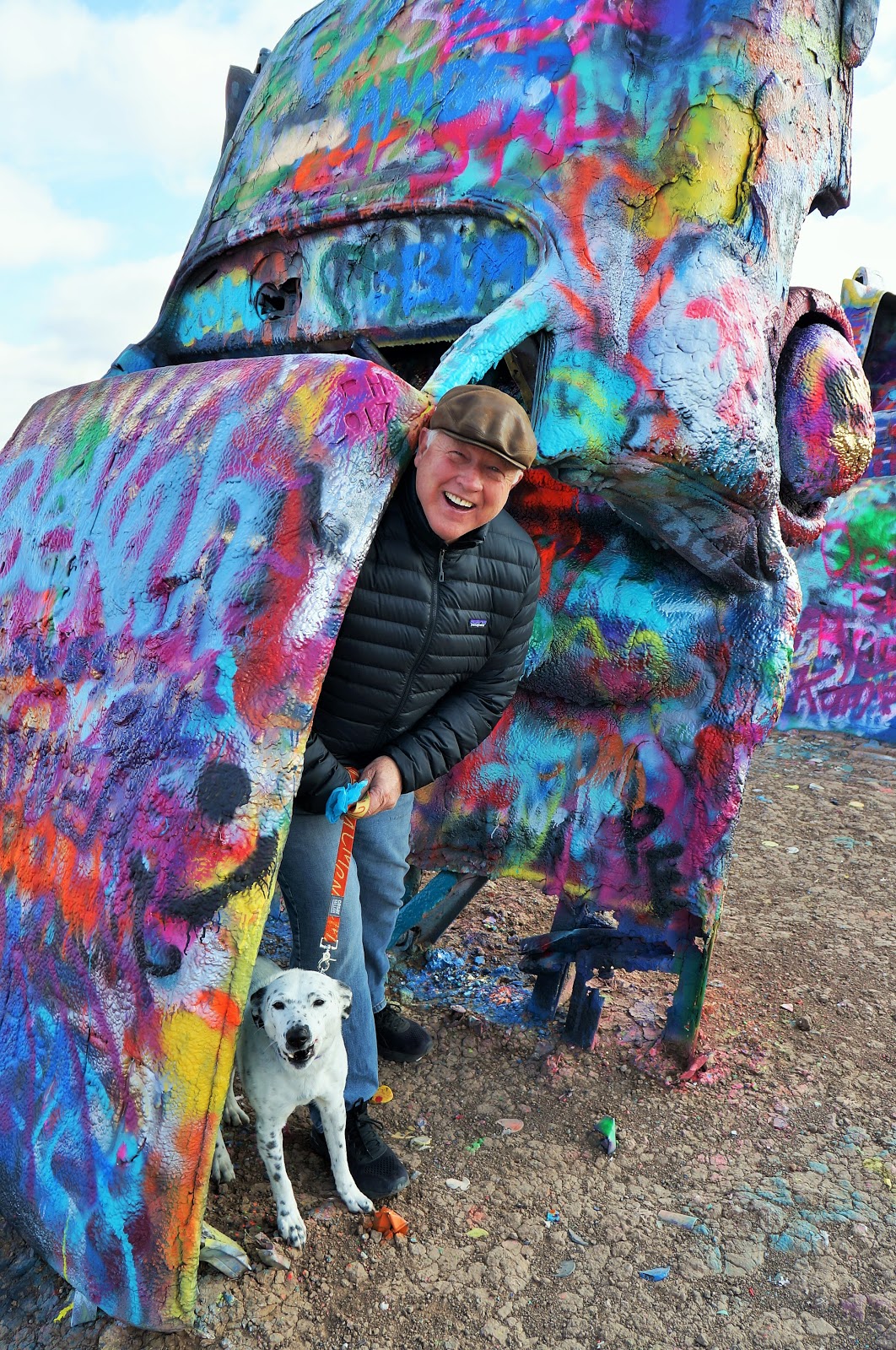
Forty-four years have now passed and they are still there. Tourists, pets, yuppies, everyone is still welcome and there is no ticket taker, no entrance fee, no gift shop.
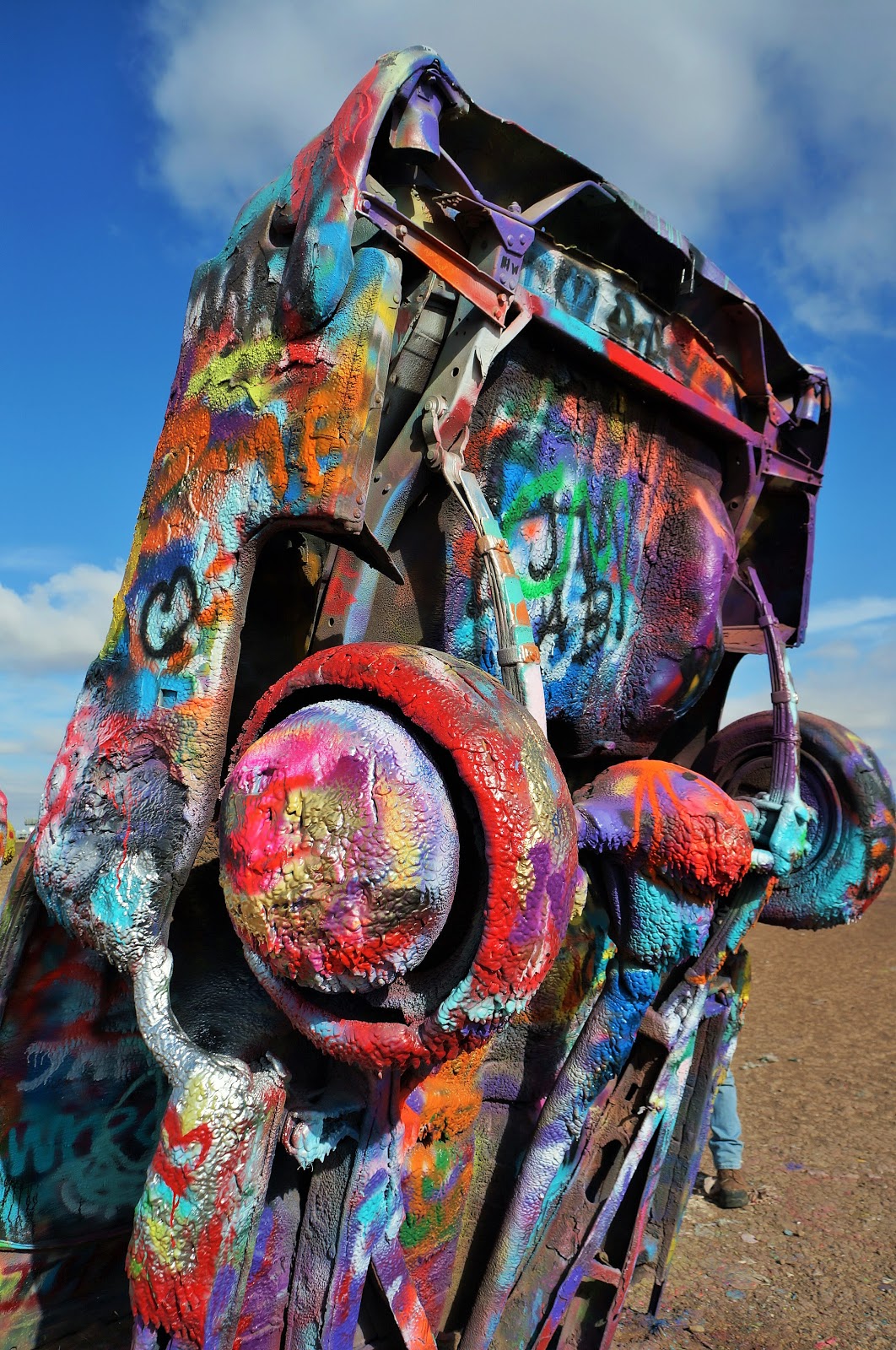
Visitors are encouraged (heck, practically required) to bring their own spray paint and leave their mark. But you’d best take a picture of your handiwork, because within hours or days, it will be painted over by someone else!

Even the ground, the fence, the dumpsters are not immune from artistic expression.
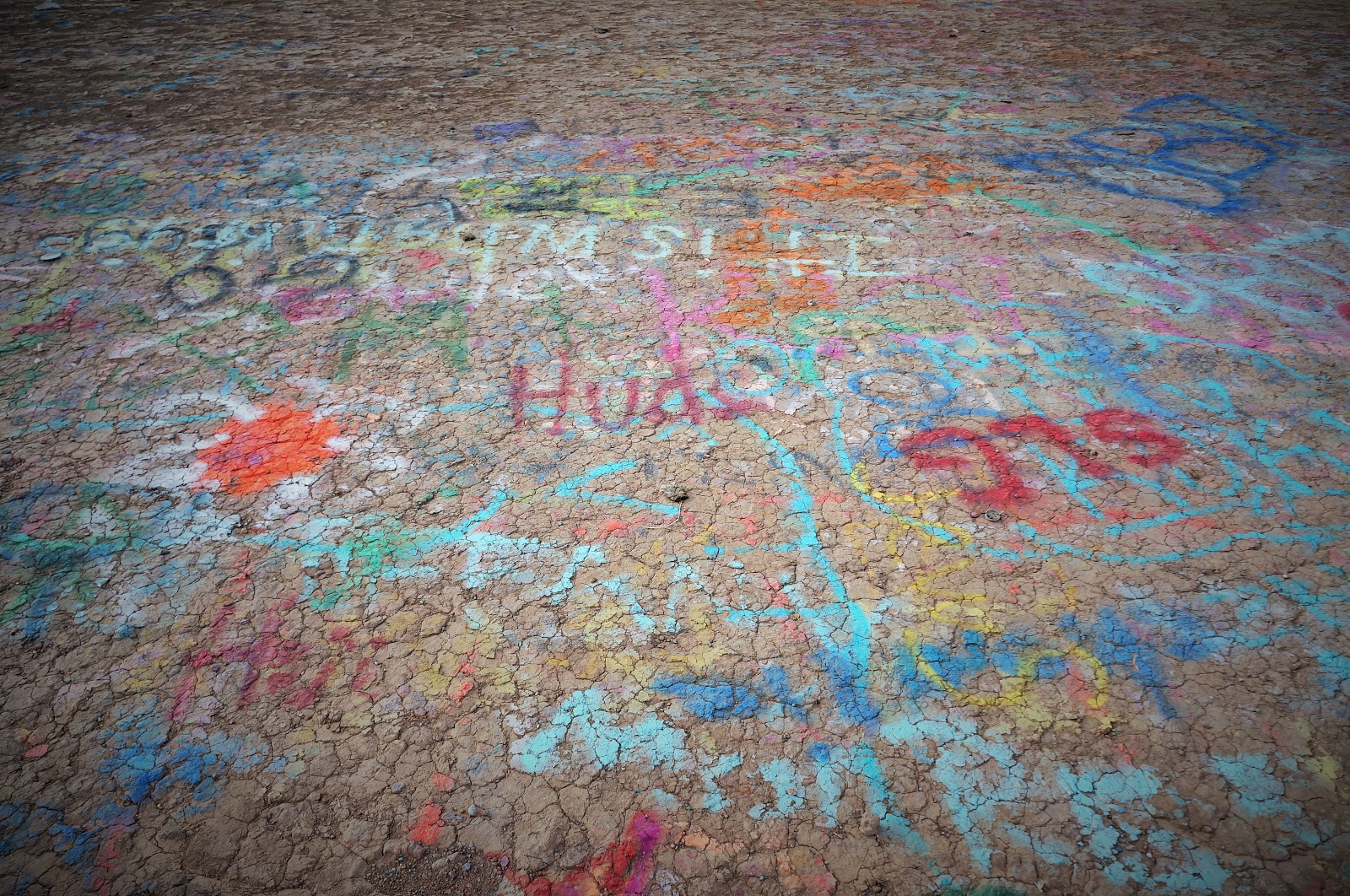

The State of Texas is not amused but can’t do anything about the cars, which are on private property.
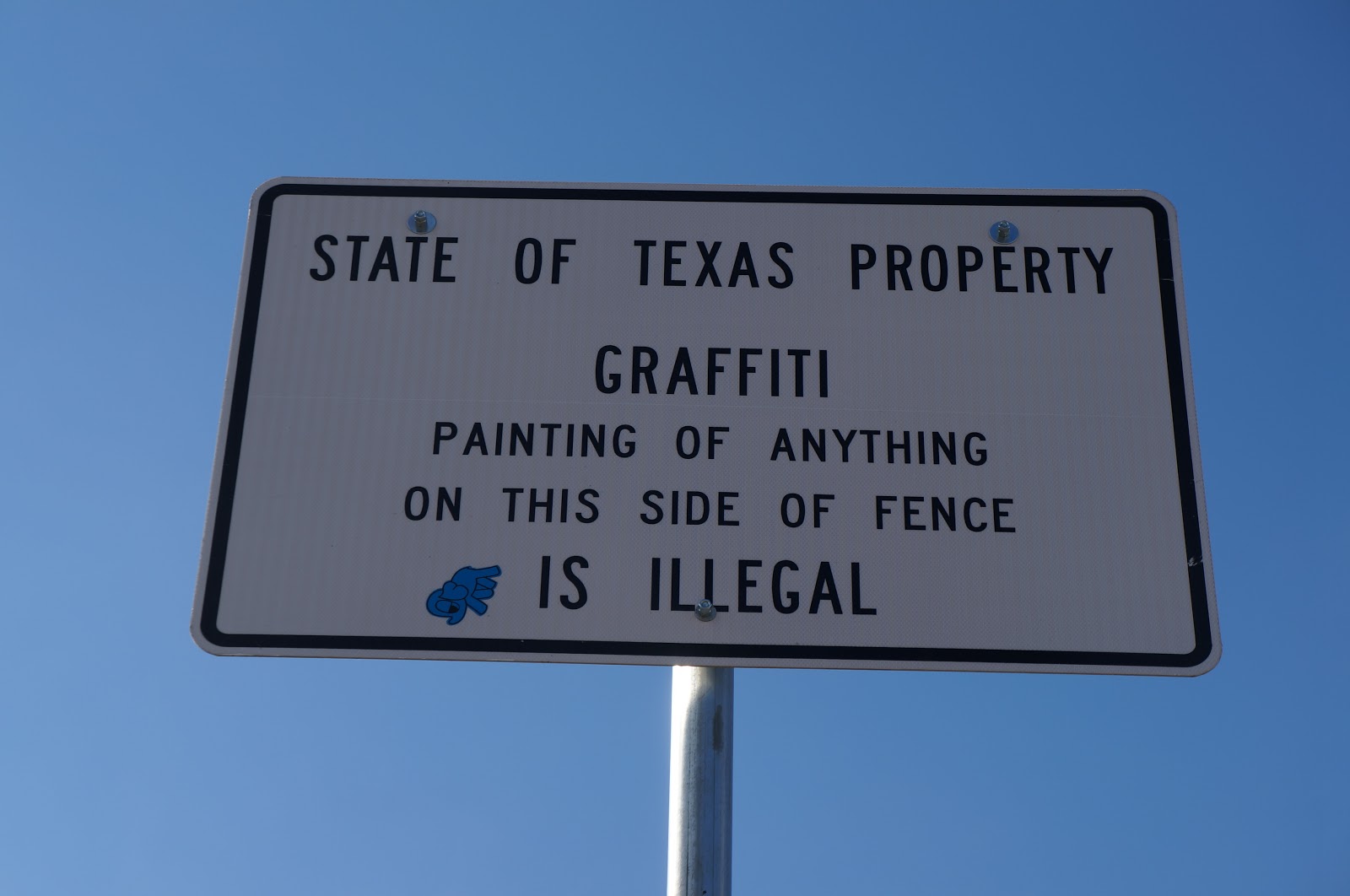
Cadillac Ranch is a testament to the free spirit of Americans, who want to be naughty but don’t want to be arrested for it. Wahoooooo!

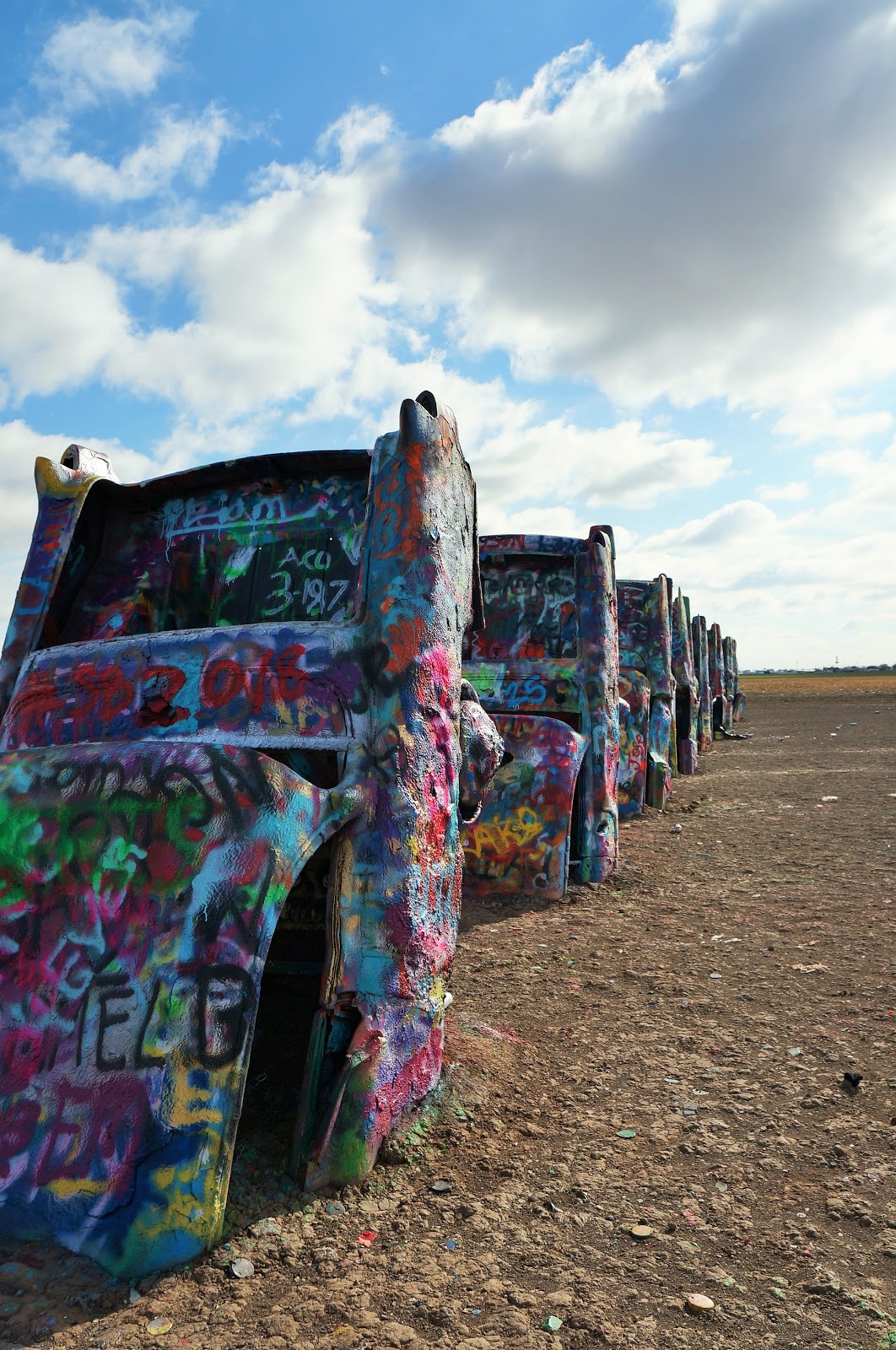
Leaving Man’s Artwork behind us, we headed back through New Mexico on our way home.
In search of (and likely to find): God’s Artwork! And boy, did NM deliver … in spades!
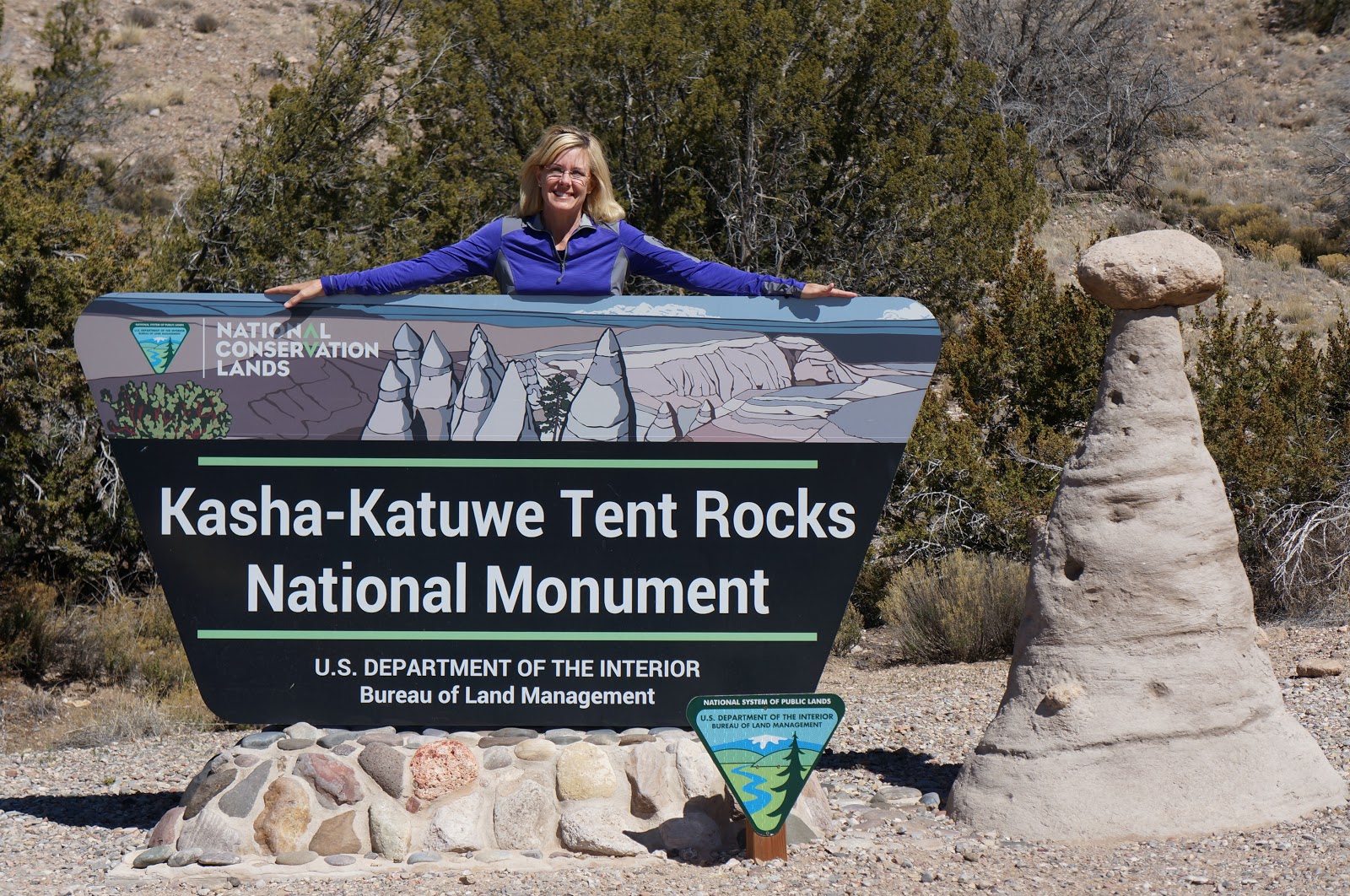
Near the Native American hamlet of Cochiti Pueblo, the Kasha-Katuwe Tent Rocks National Monument was some of the most spectacular hiking we’ve ever done!
 |
| We’ve going to the TOP!
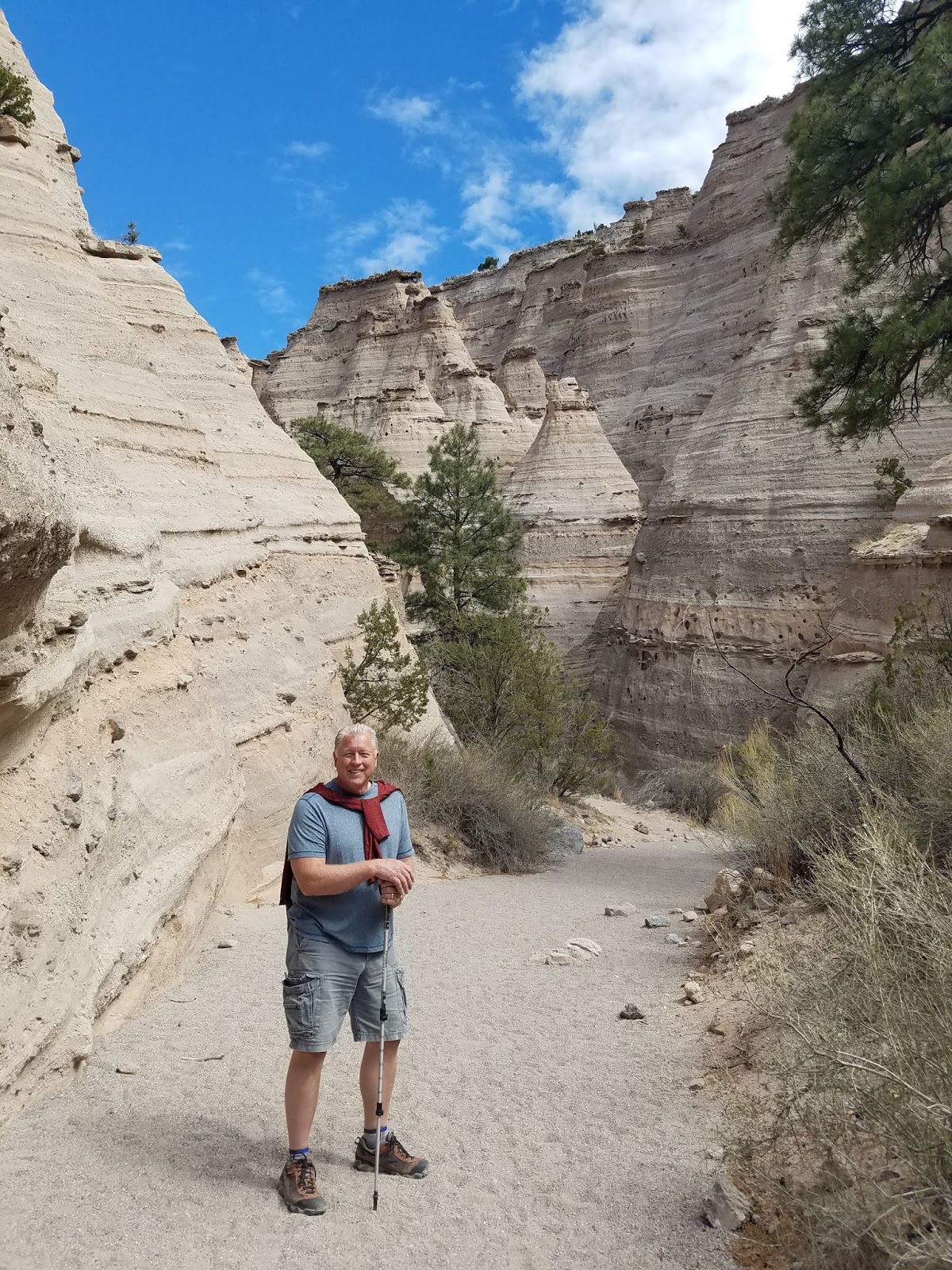 The cone-shaped tent rock formations came from volcanic eruptions 6-7 millions years ago. 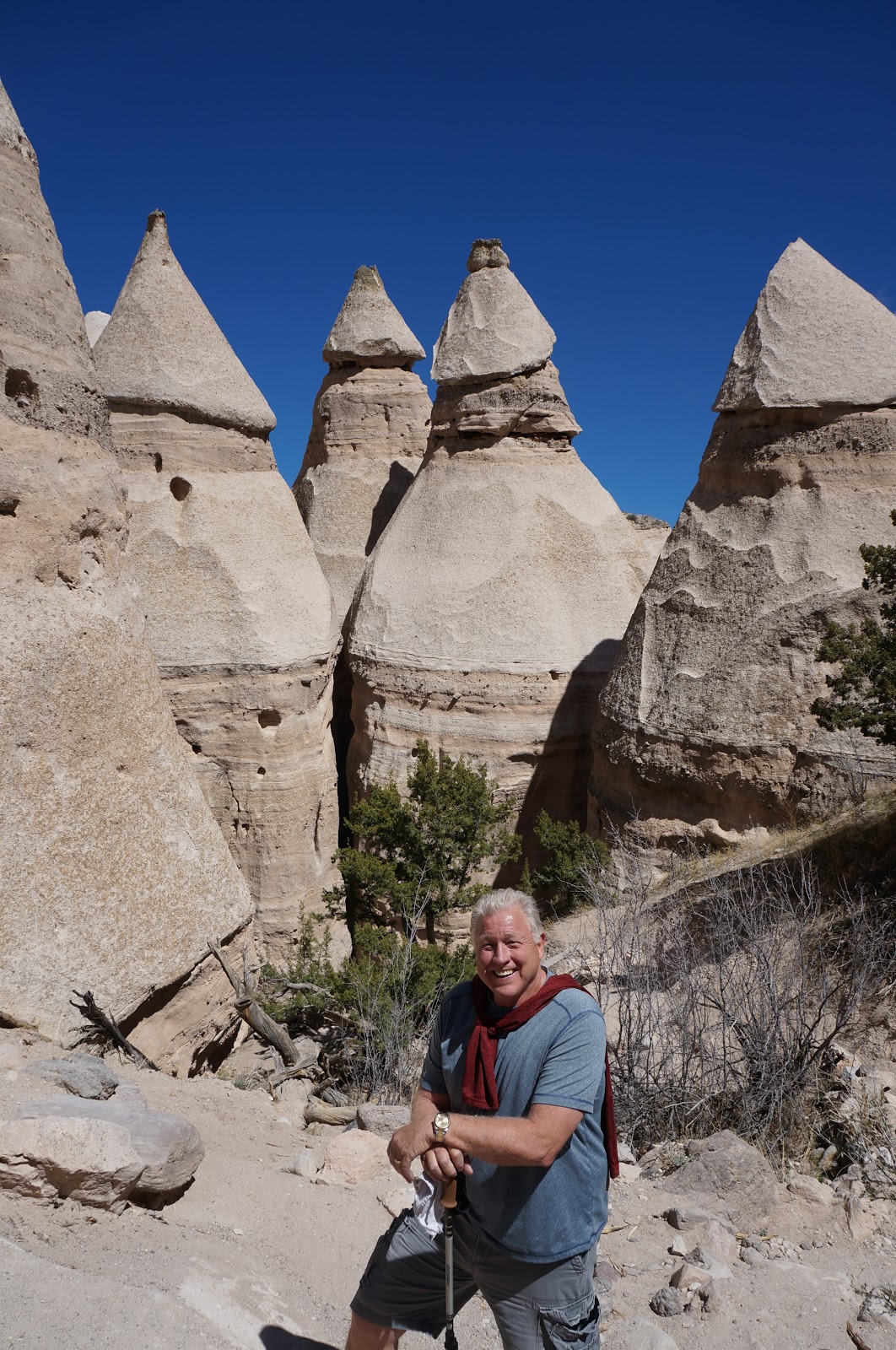
The layering of volcanic material creates the bands of grey, pink and beige rocks. |

Over time, wind and water created amazing slot canyons and arroyos, for lots of hiking fun!

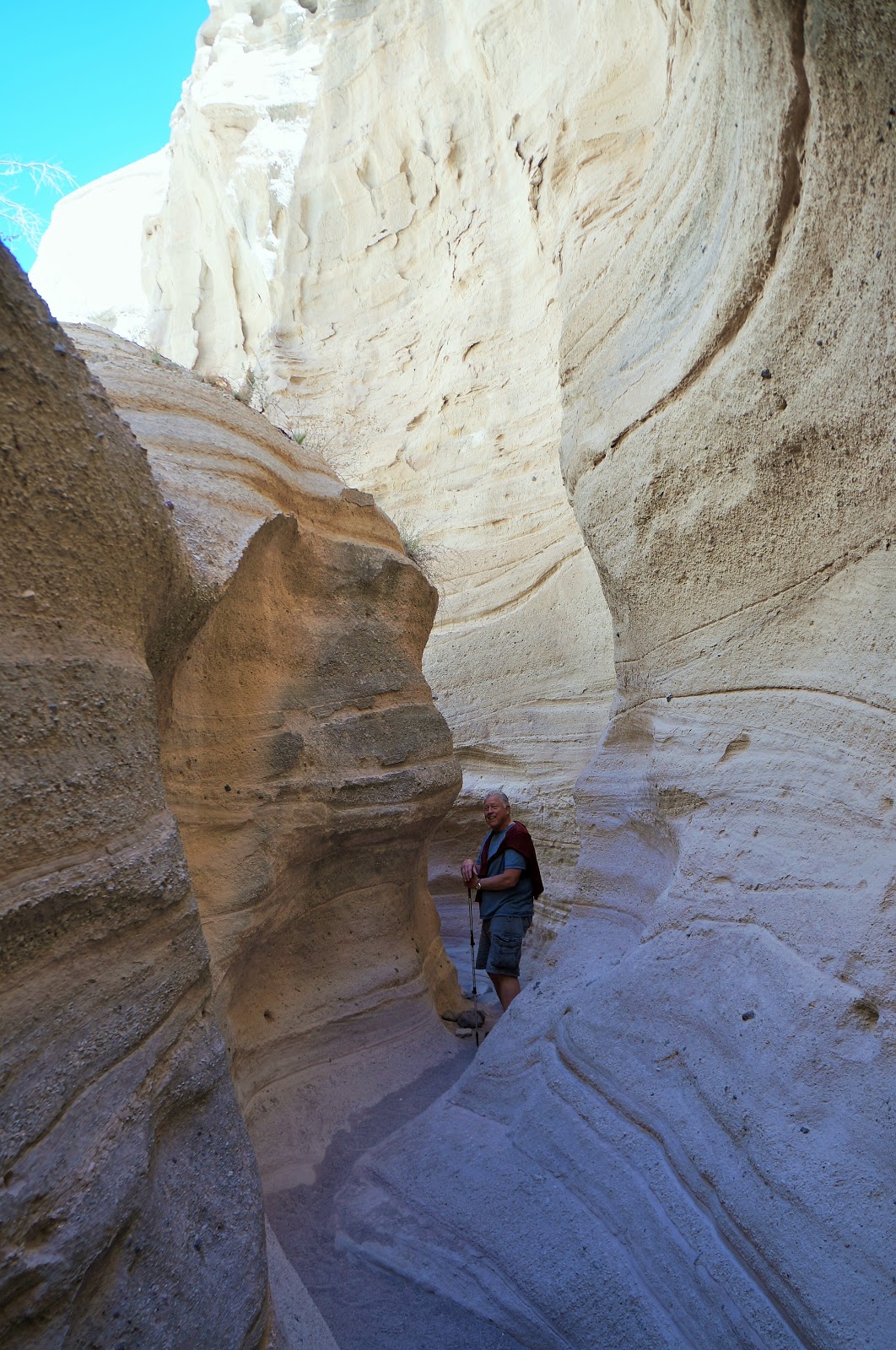

The Canyon Trail is only 3-miles round trip, but a steep 630-foot climb to the top leaves you breathless … for many reasons! WOW what a view!
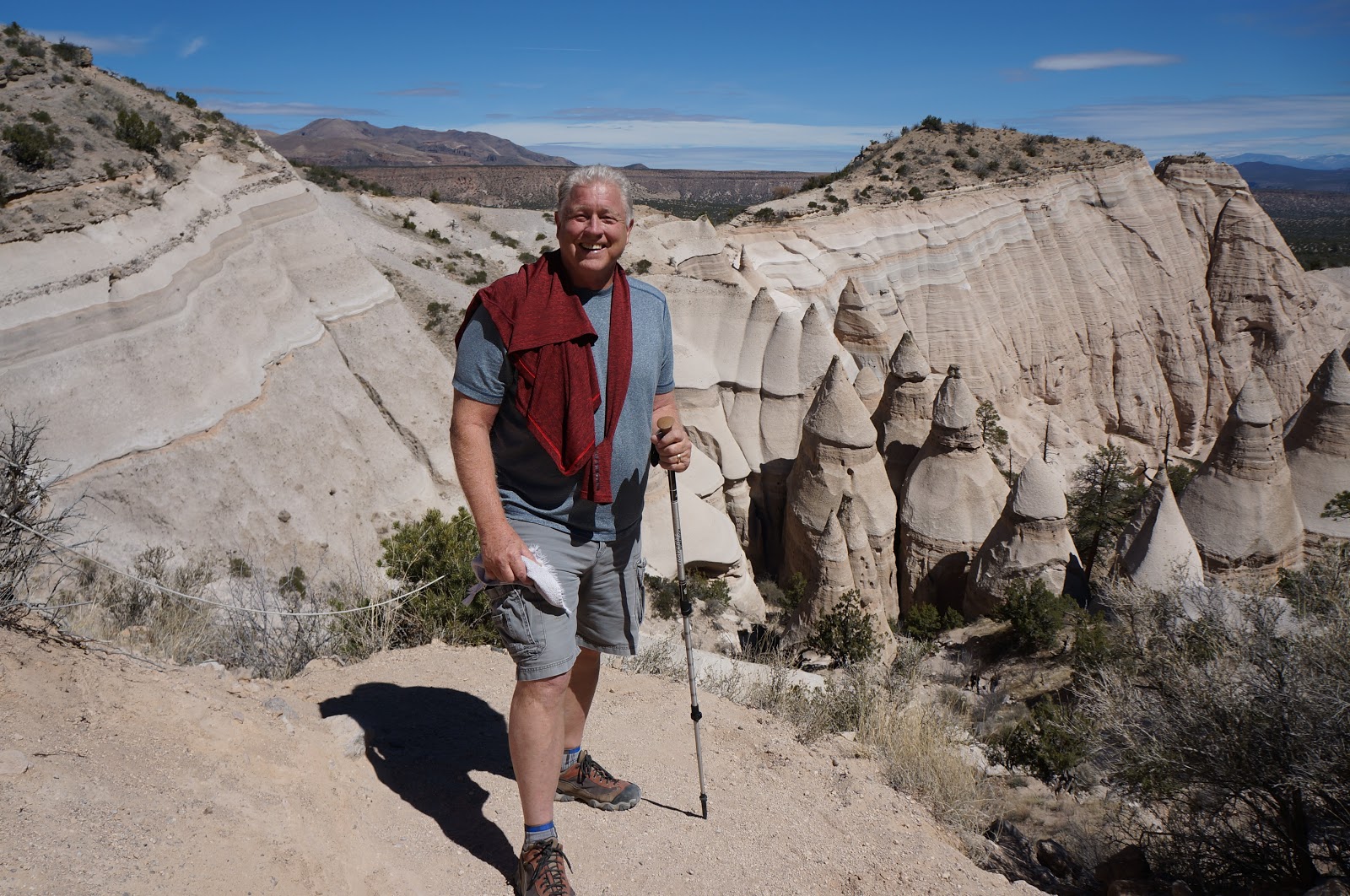

Kasha Katuwe (“white cliffs”) is only 35 miles from Santa Fe, and 52 miles from Albuquerque, but in terms of a “bang for your buck” combo of beauty and accessibility, a fantastic find!
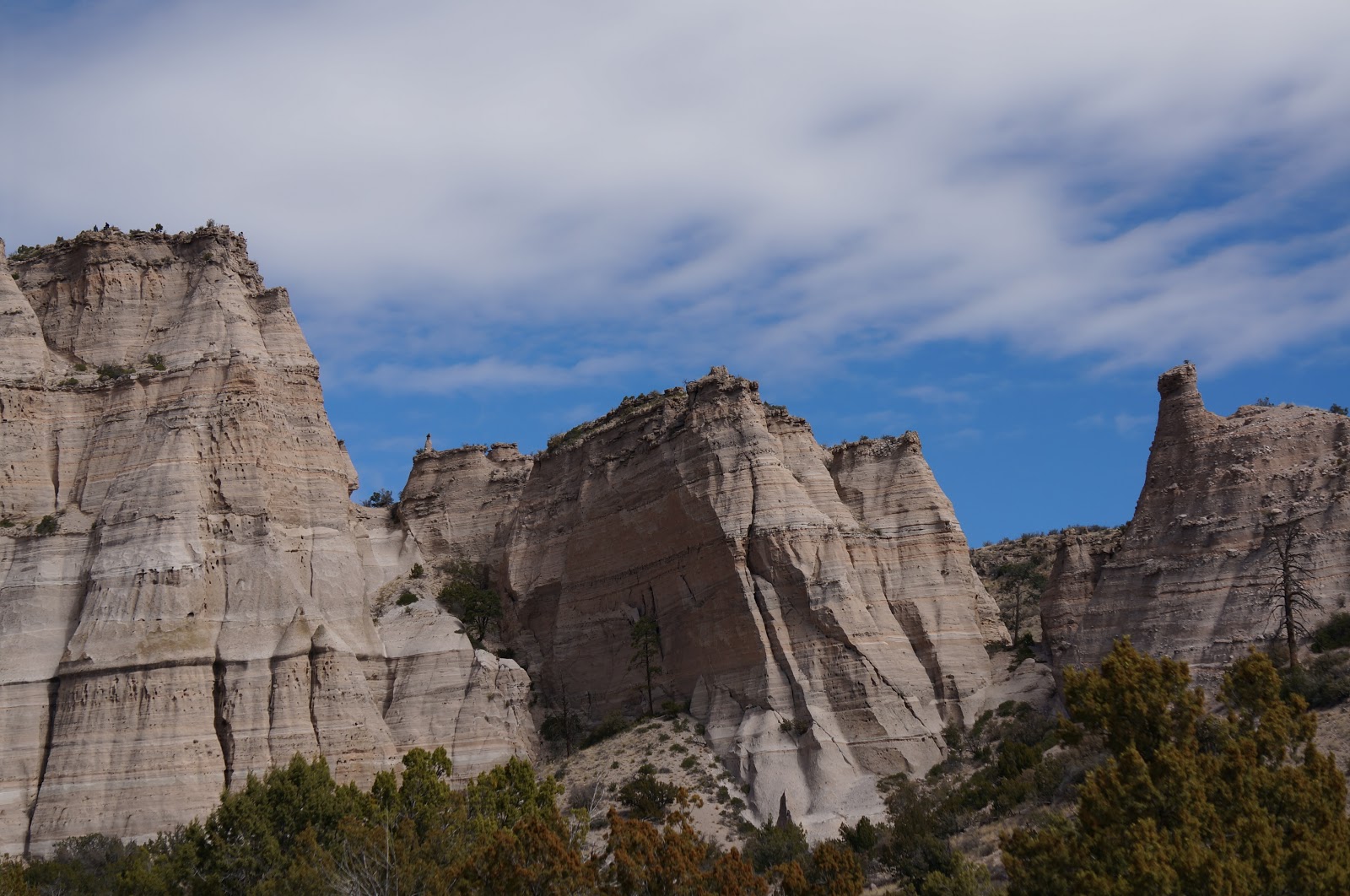

Another quick but interesting stop south is the “Ice Cave and Bandera Volcano,” south of Grants, NM. A hike amongst jagged, broken lava and sinkholes …

…past twisted trees up to 700 years old (they are twisted and gnarled because trees growing in lava find it hard to establish deep roots) …

… to a steep set of stairs ….

… to “THE ICE CAVE”!

The green tint is caused by an Arctic algae.
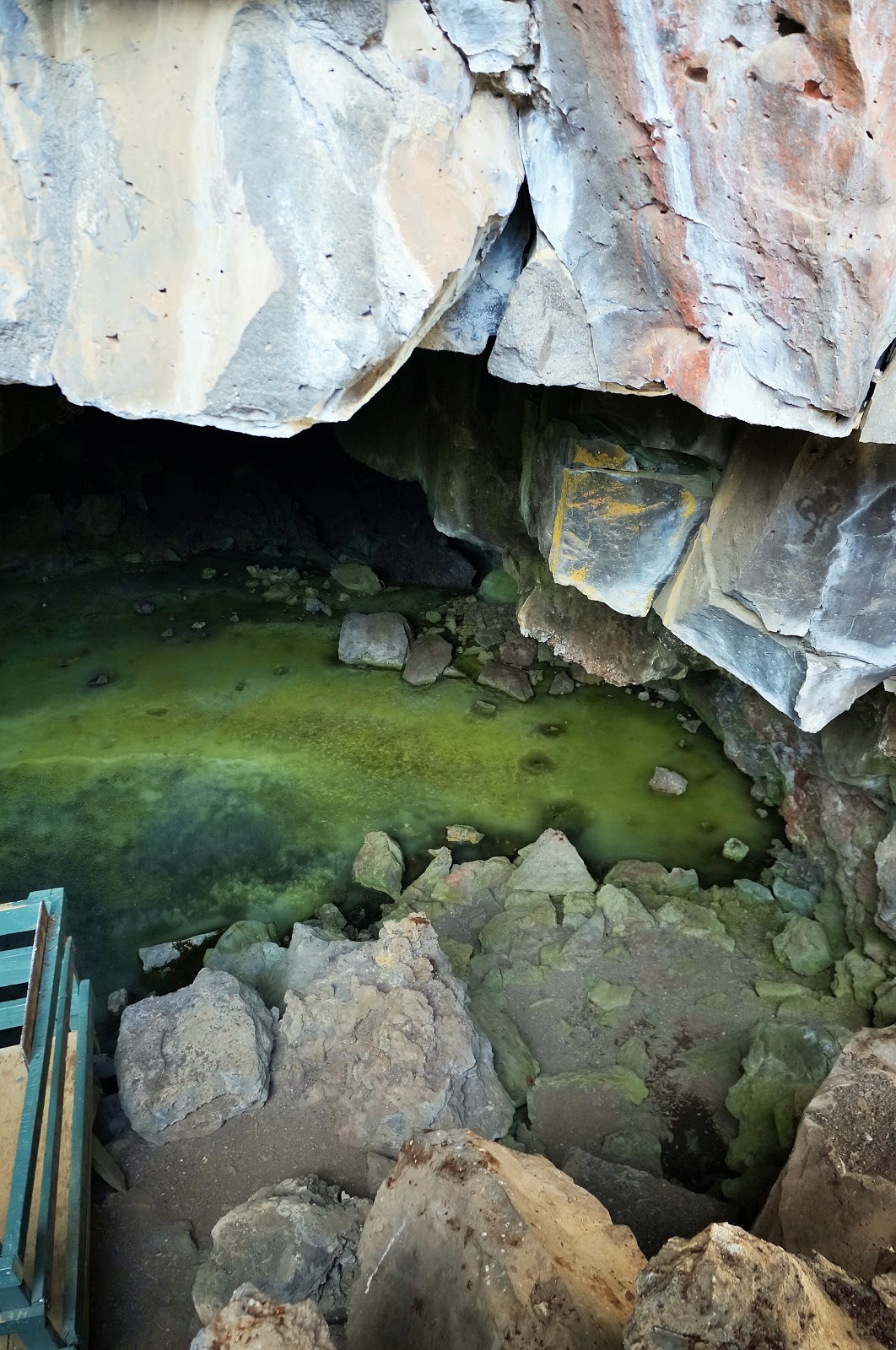
Formed 3,400 years ago, this floor of the ice is 20 feet thick!
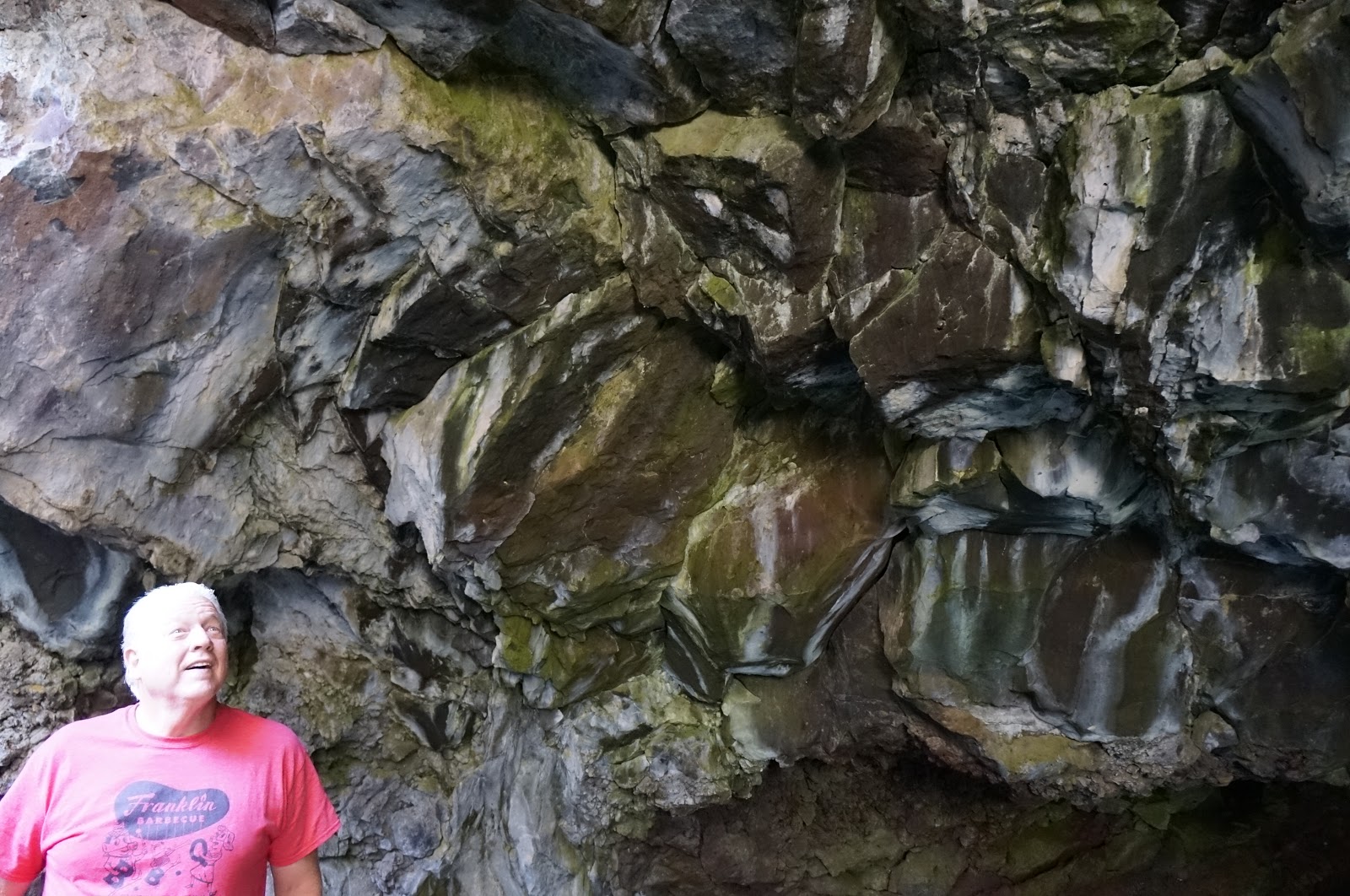
The temperature in the cave never gets above 31 degrees F.
Be sure to bring a cuddly friend to keep you warm!
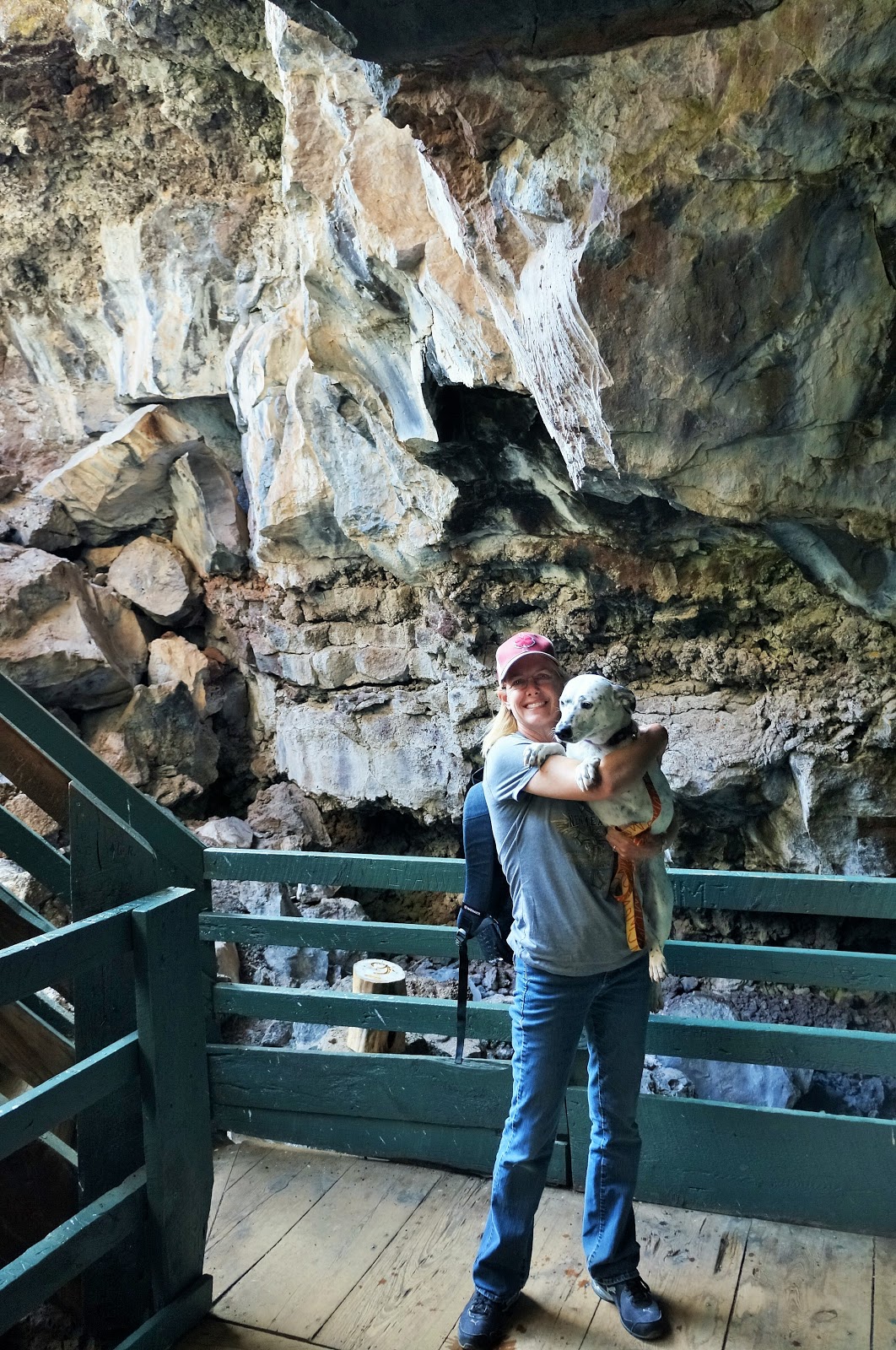
Leaving the Ice Cave, we trekked up a nearby mountain to view the Bandera Crater, one of 29 in the area. And you thought you had to go to Hawaii for volcanoes!

Erupting 10,000 years ago, this crater is 1,400 feet wide and 800 feet deep.
Time, erosion and gravity are taking their toll on it (as they are on me, too)
and it is slowing filling up as cinders and rocks fall down into it.

Lastly, our final NM stop for viewing of God’s Artwork was El Morro National Monument.

El Morro is a great sandstone promontory with similarly great hiking, and a spectacular storytelling history carved into its walls.
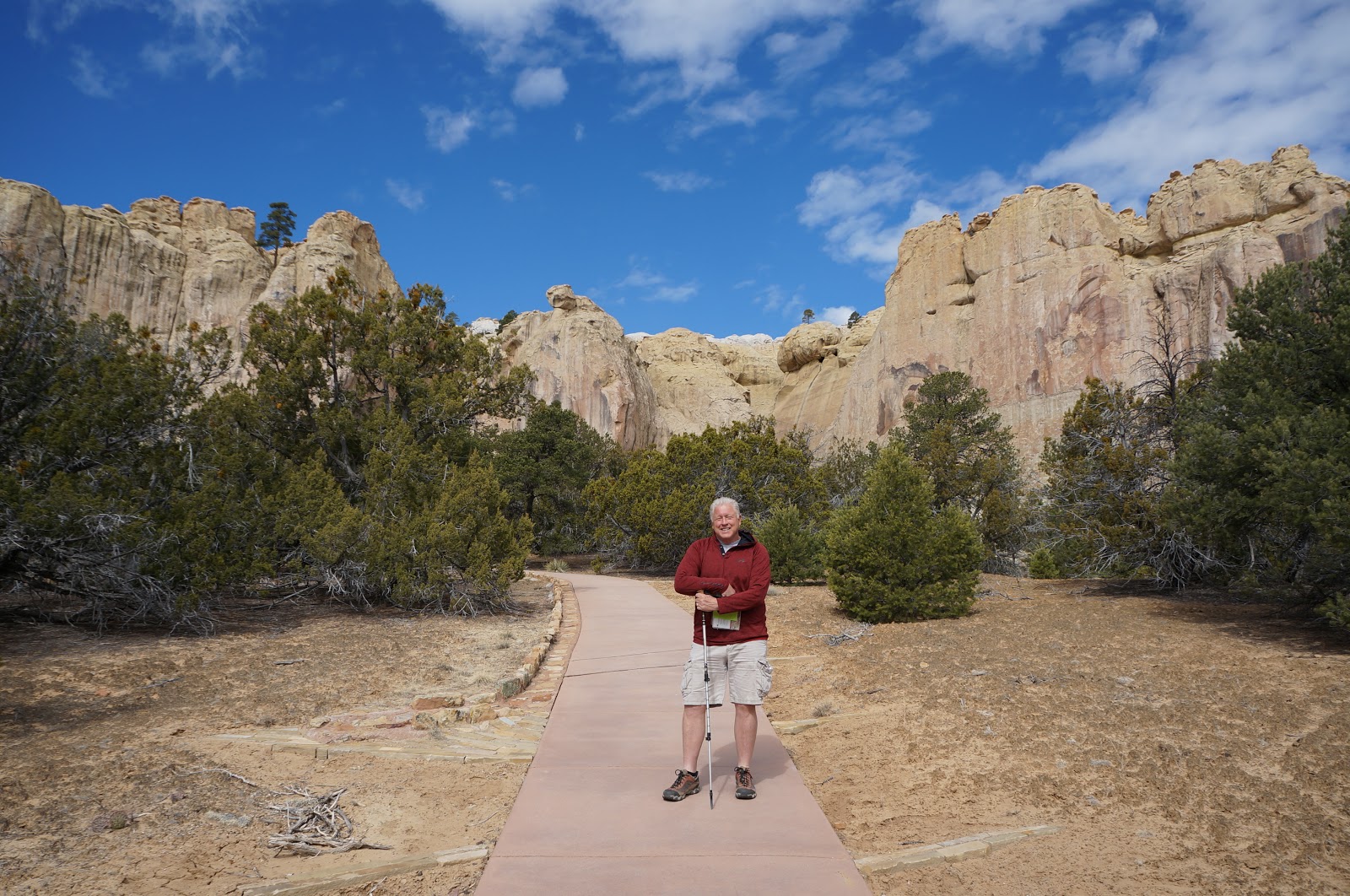
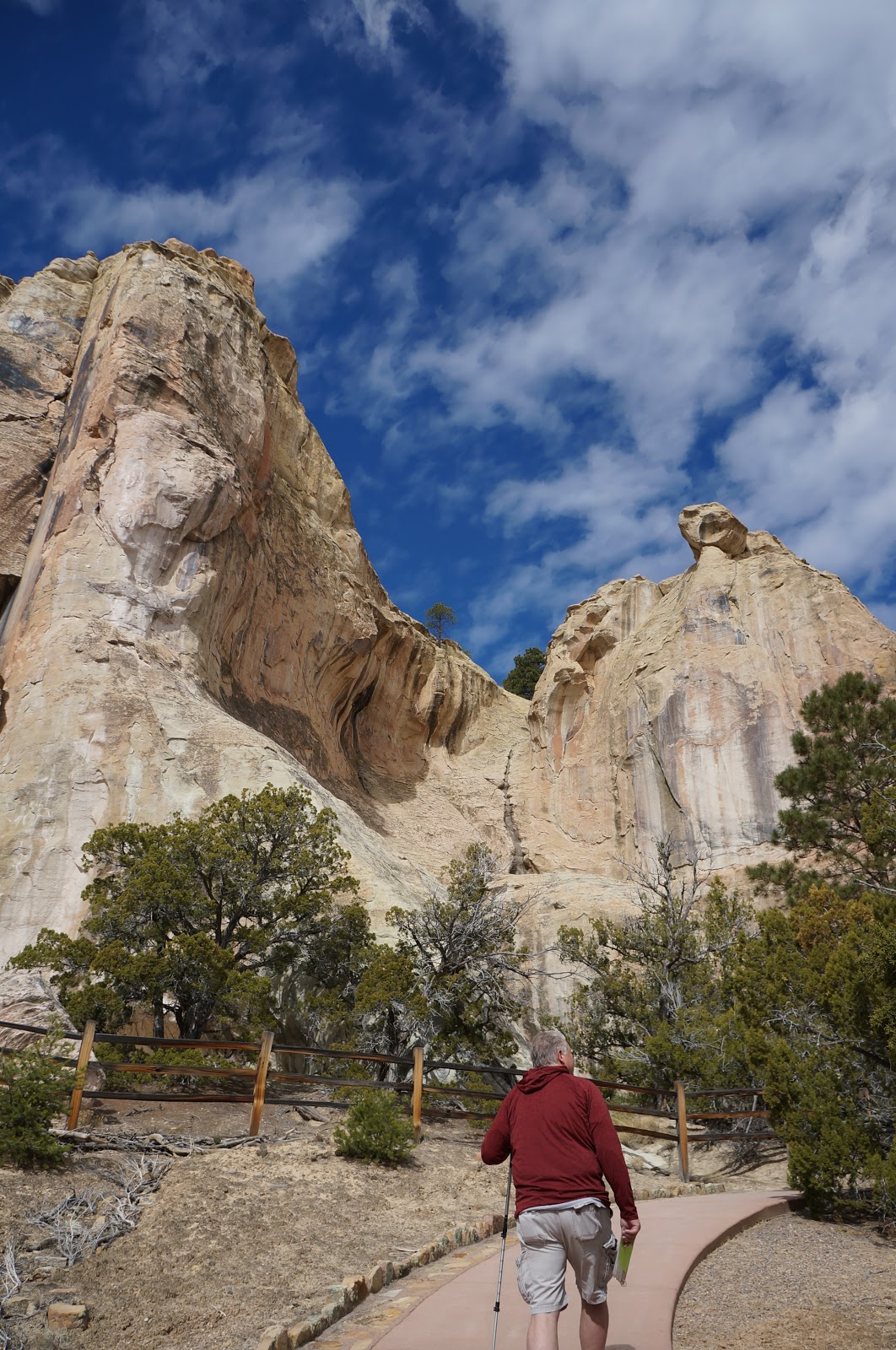
Ancestral Puebloans, Spanish and American travelers heading west would stop here for it’s year-round pool of life-sustaining water. The dark lines on the rocks show the spillways where water flows down when it rains.
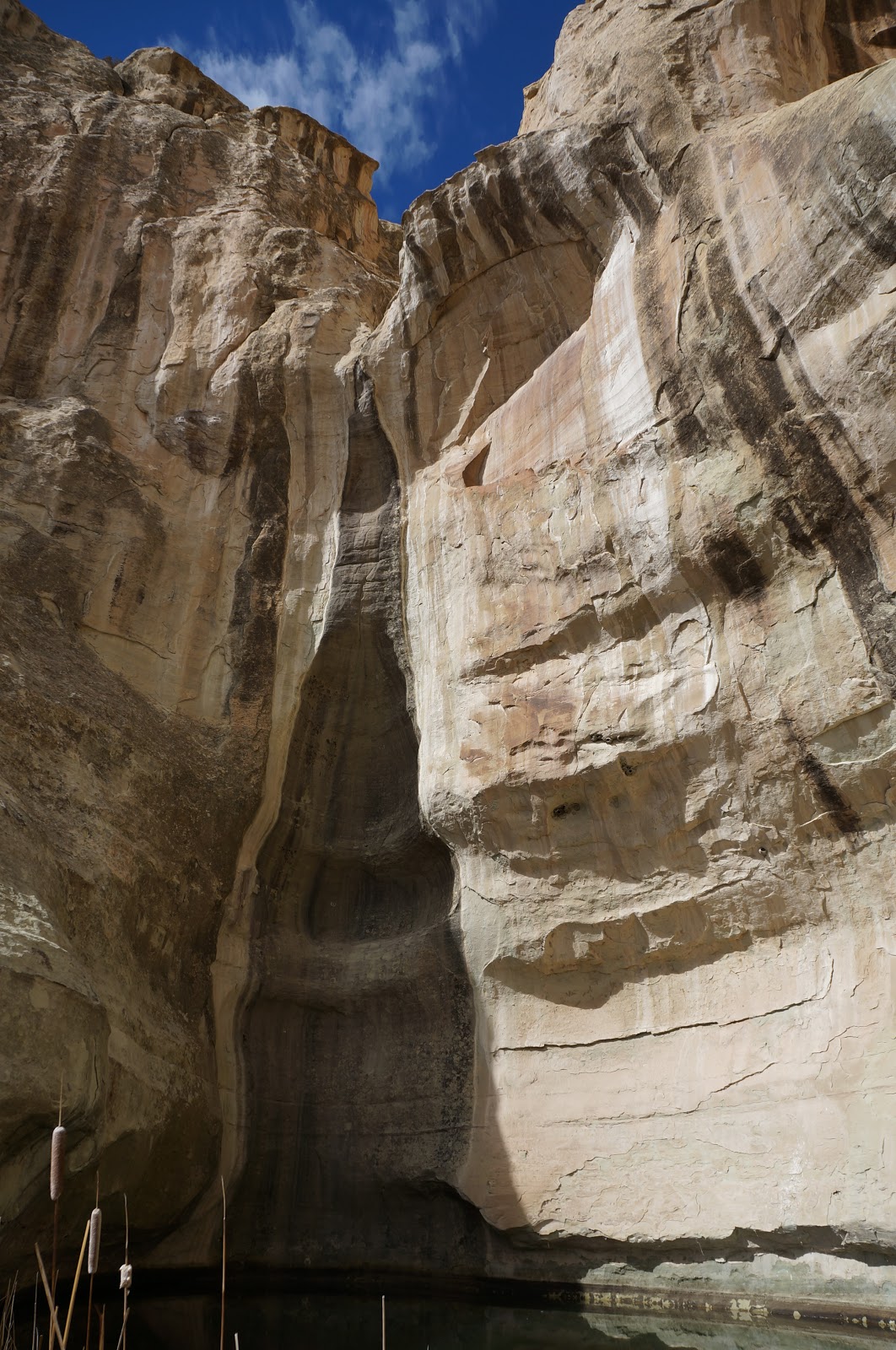
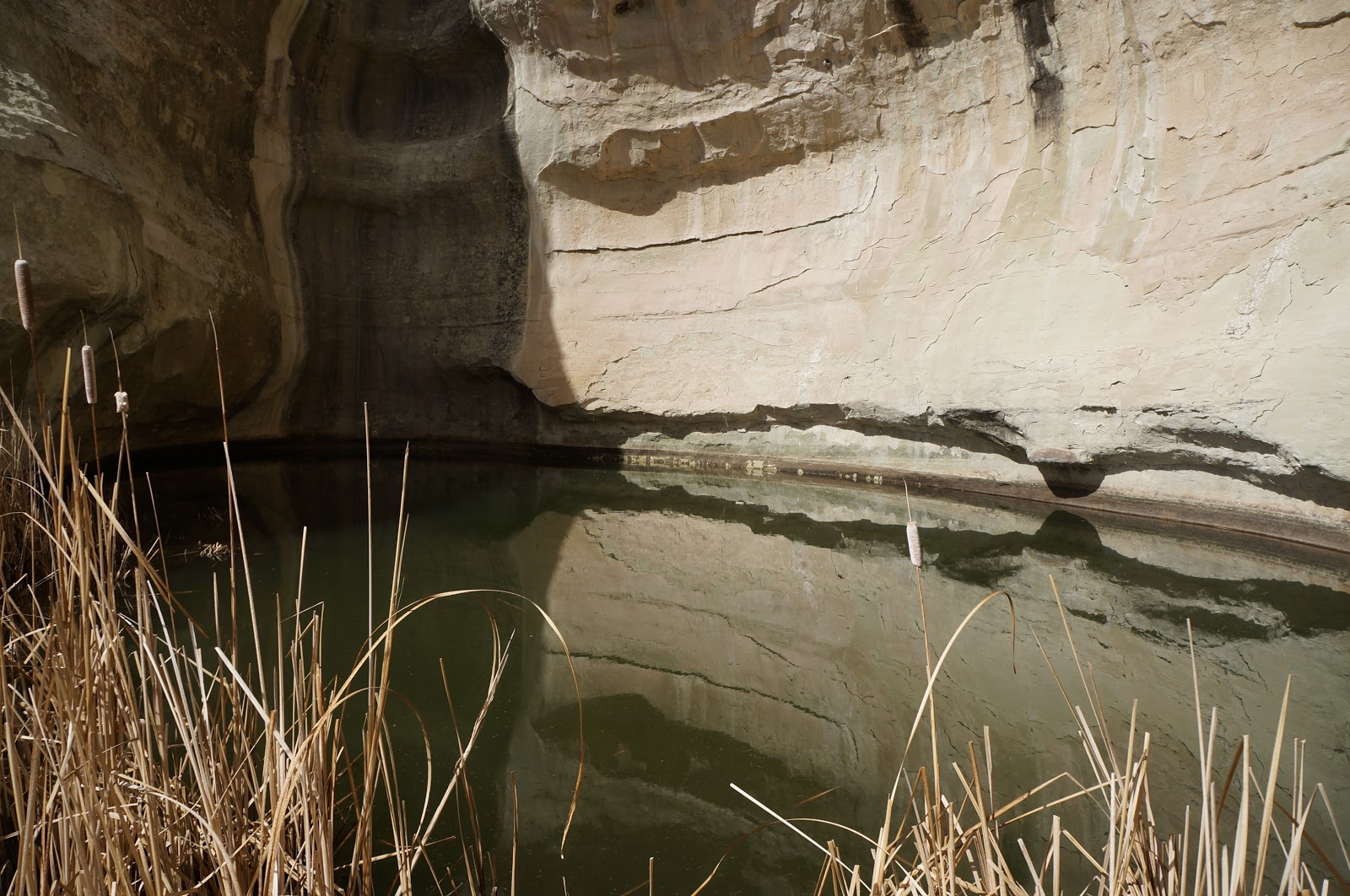
Here, on “Inscription Rock,” over 2,000 signatures, dates, messages and petroglyphs have been carved and left for posterity. Call it “ancient graffiti” … though longer-lasting than spray paint on old Cadillacs! They all have a story to tell! Here are just a few of my favorite examples!
The earliest marking are Puebloan petroglyphs. Can you make out some of the shapes?
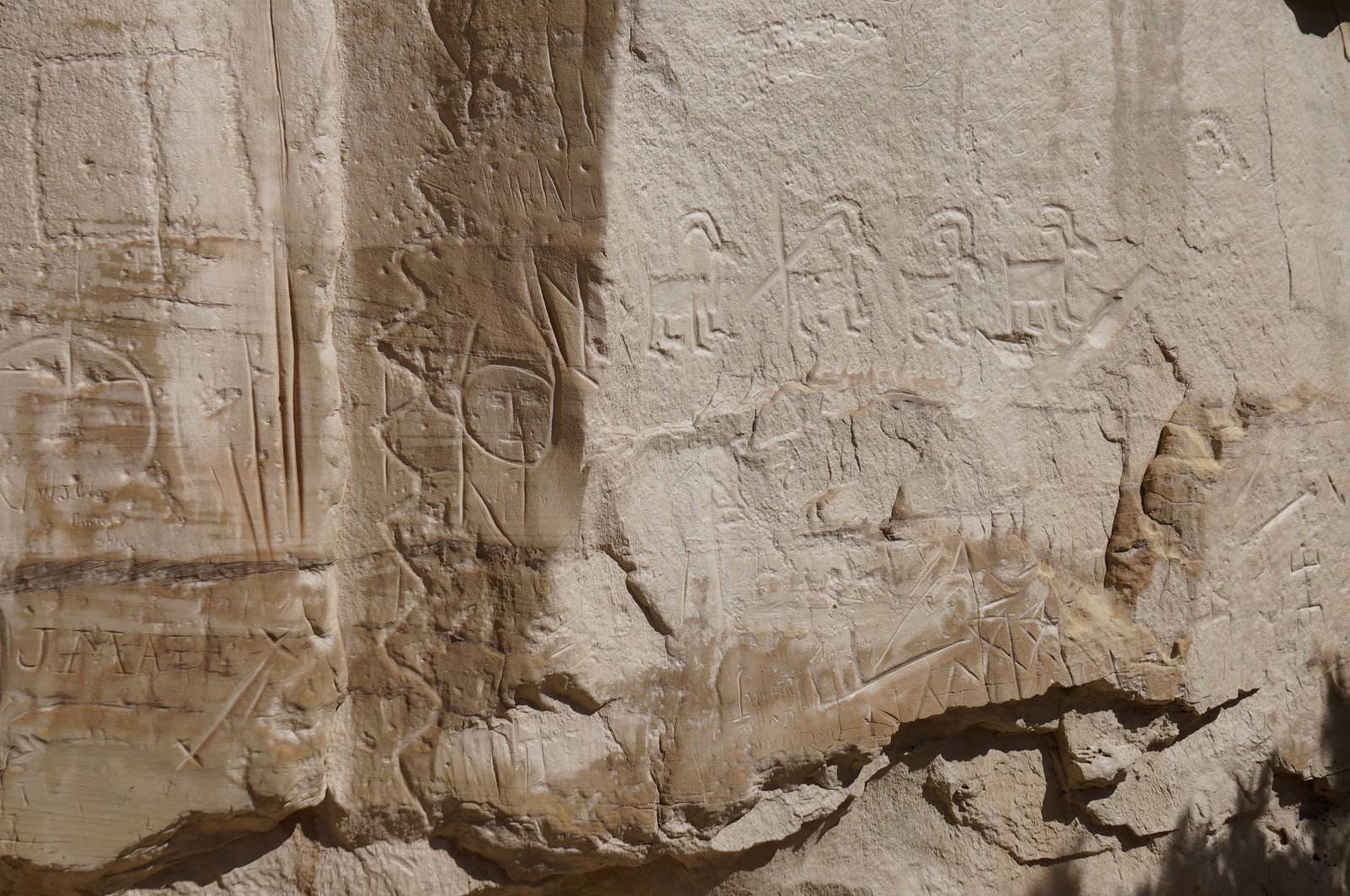
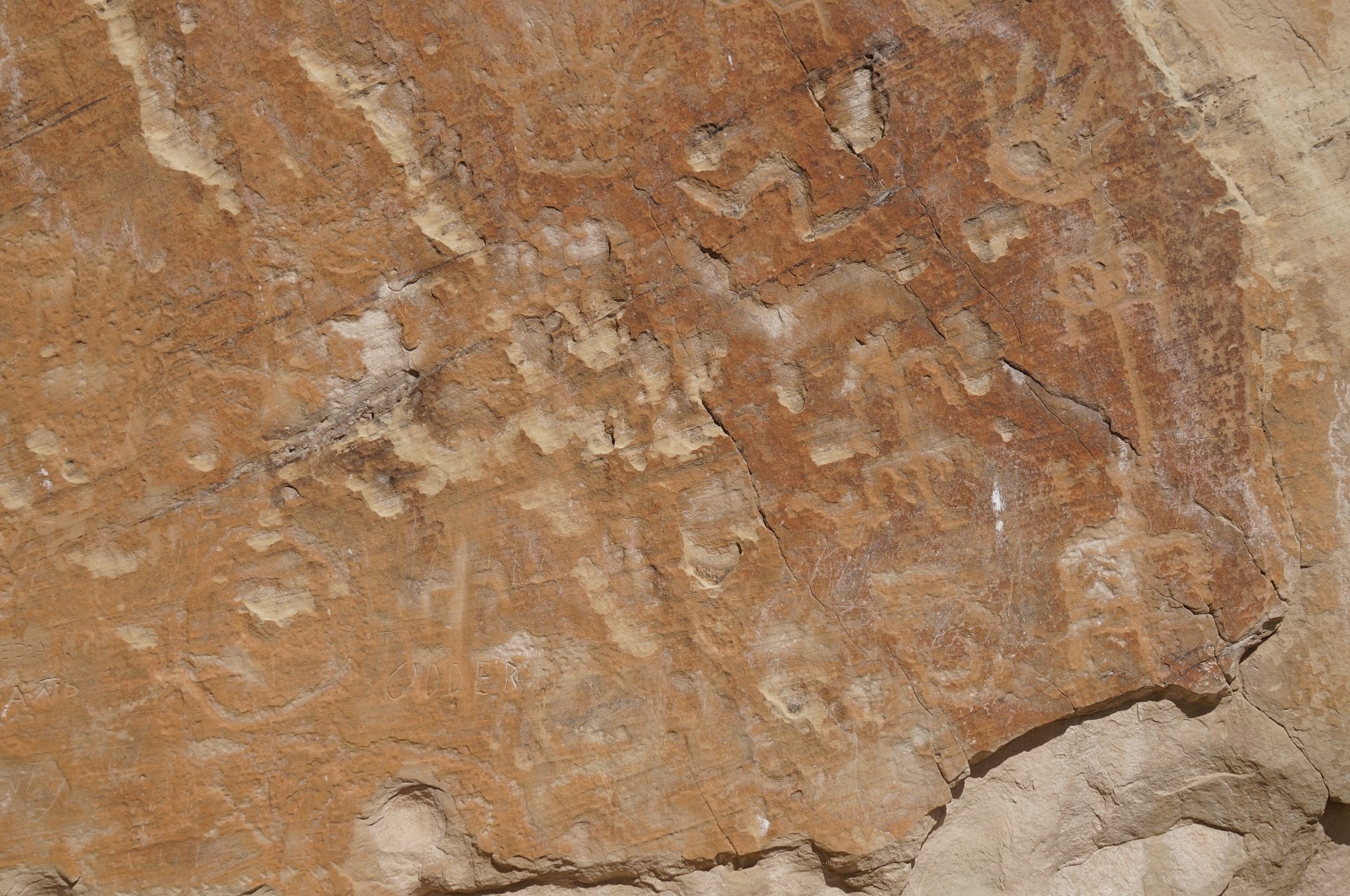
Starting in 1583, Spanish travelers began to stop by, and later, a wave of visitors following this route west as part of America’s westward expansion, each adding to this “rock autograph book” with fragments of their stories.

Custodians of the monument know many of their stories. For instance, very few women left their marks, but Miss A.E. Baley was one of the exceptions. She and her sister Amelia were part of a wagon party headed from Missouri to California in 1858. After leaving El Morro, the sixty Anglo travelers in her party were attacked by 800 Mojave Indians, killing 9 and injuring 17. The caravan retreated to Albuquerque to wait out the winter, but the Baley sisters eventually made it to Fresno County. Now that’s a tough dame for ya!
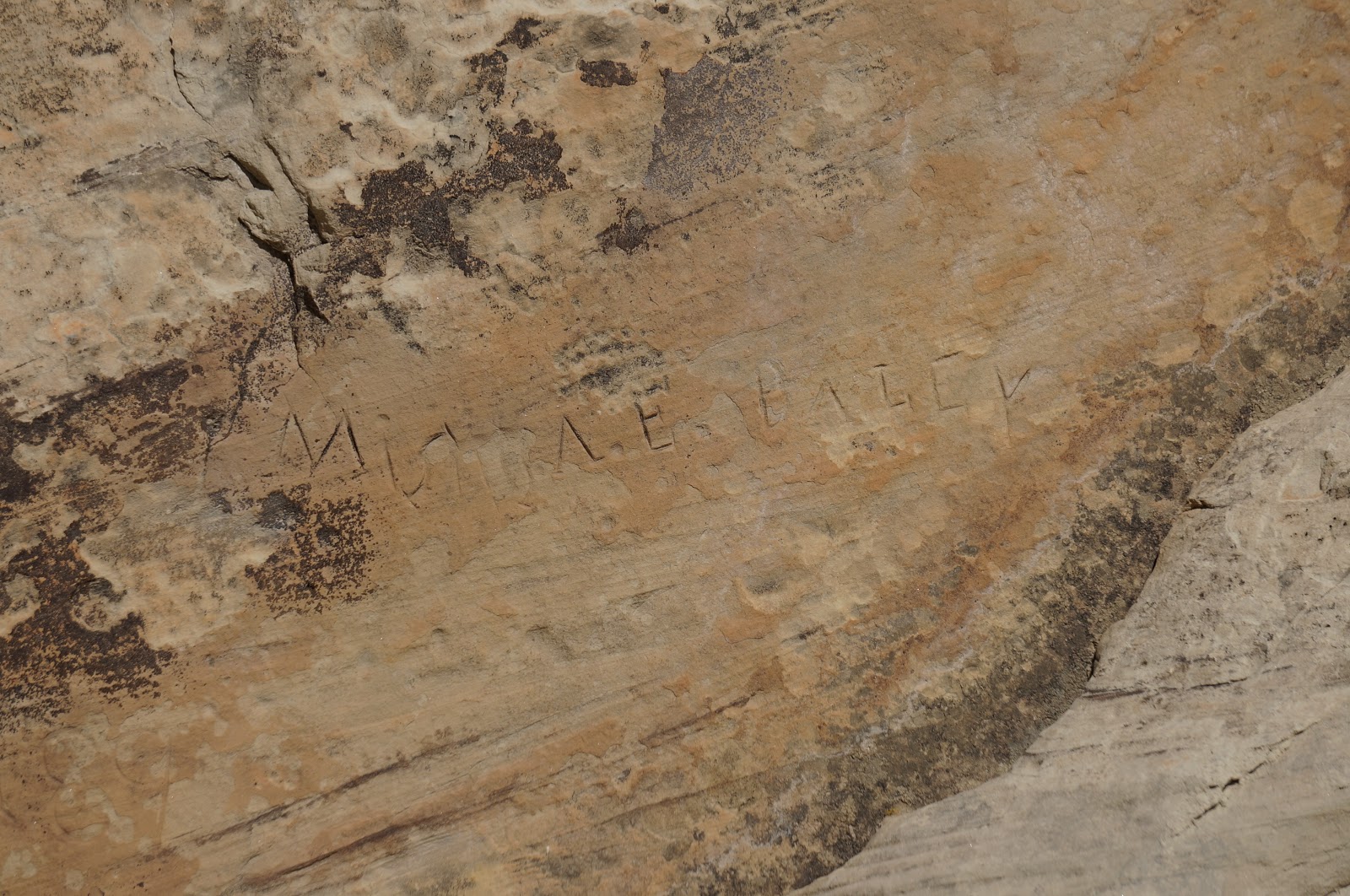
In the “truth is stranger than fiction” category, P. (Peachy) Breckinridge was in charge of 25 camels being led past El Morro in 1857, as they were being tested by the U.S. Army for their usefulness (and superiority to horses or mules) in crossing the deserts of the Southwest. Predictably, they caused quite a stir as the exotic beasts made their eventual way to Los Angeles. (Peachy also wins the “BEST FONT” award.)

Many of the inscriptions were in Spanish as their writers were participants in the Spanish settlement of New Mexico. Ramon Garcia Jurado wrote: “On the 25th of the month of June, of this year of 1709, Ramon Garcia Jurado passed through here on the way to Zuni.”
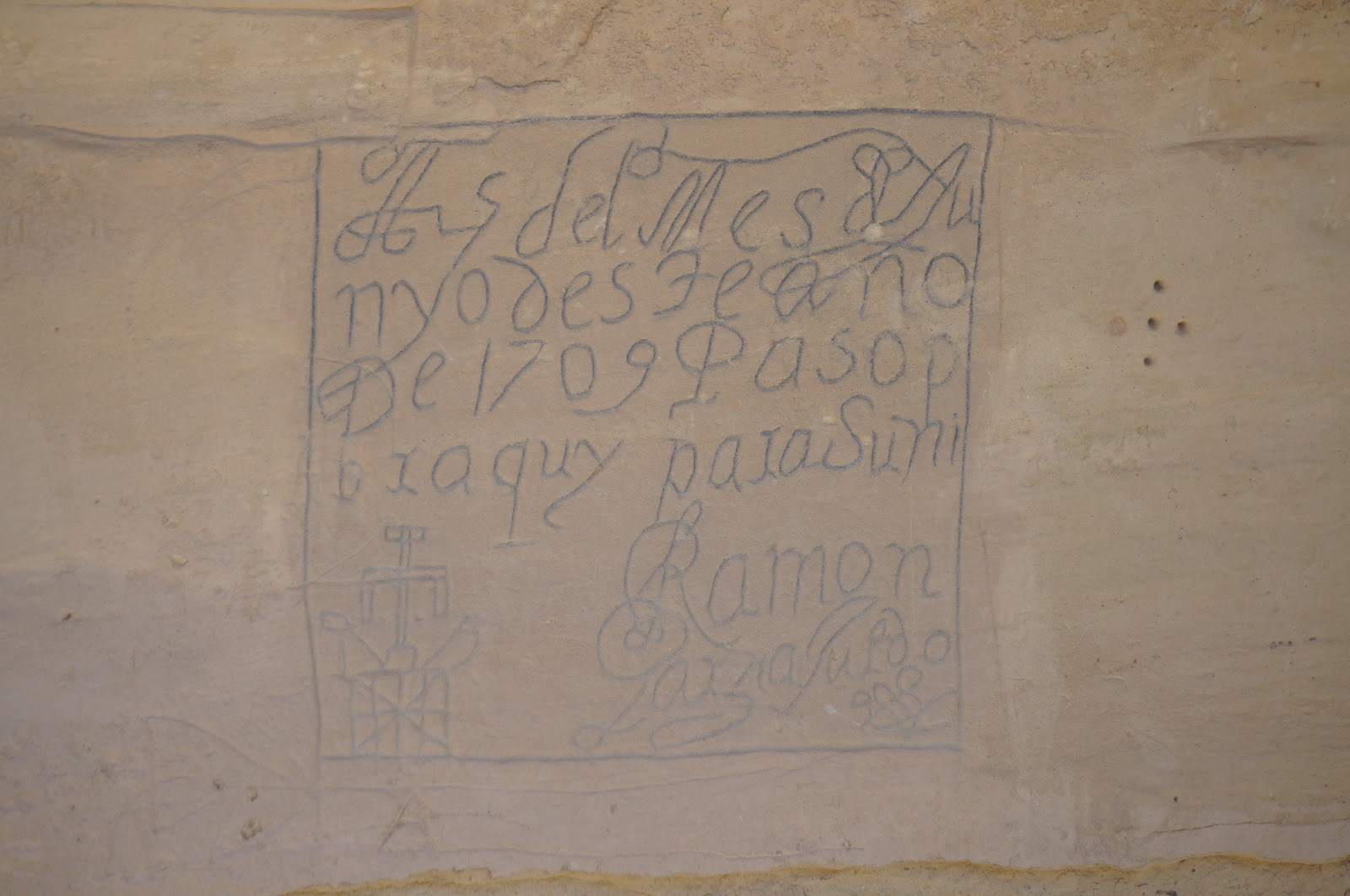
Many inscriptions have religious connotations. R.H. Orton was sent to New Mexico in the early years of the Civil War to reinforce Federal troops expecting Confederate hostilities.

In 1868, the Union Pacific Railroad ran a survey through here, but the project was never carried out. Workers on the survey crew carved their names and messages, though the Santa Fe Railroad 25 miles north rerouted travelers and ended El Morro’s place as a stopover on the route west.
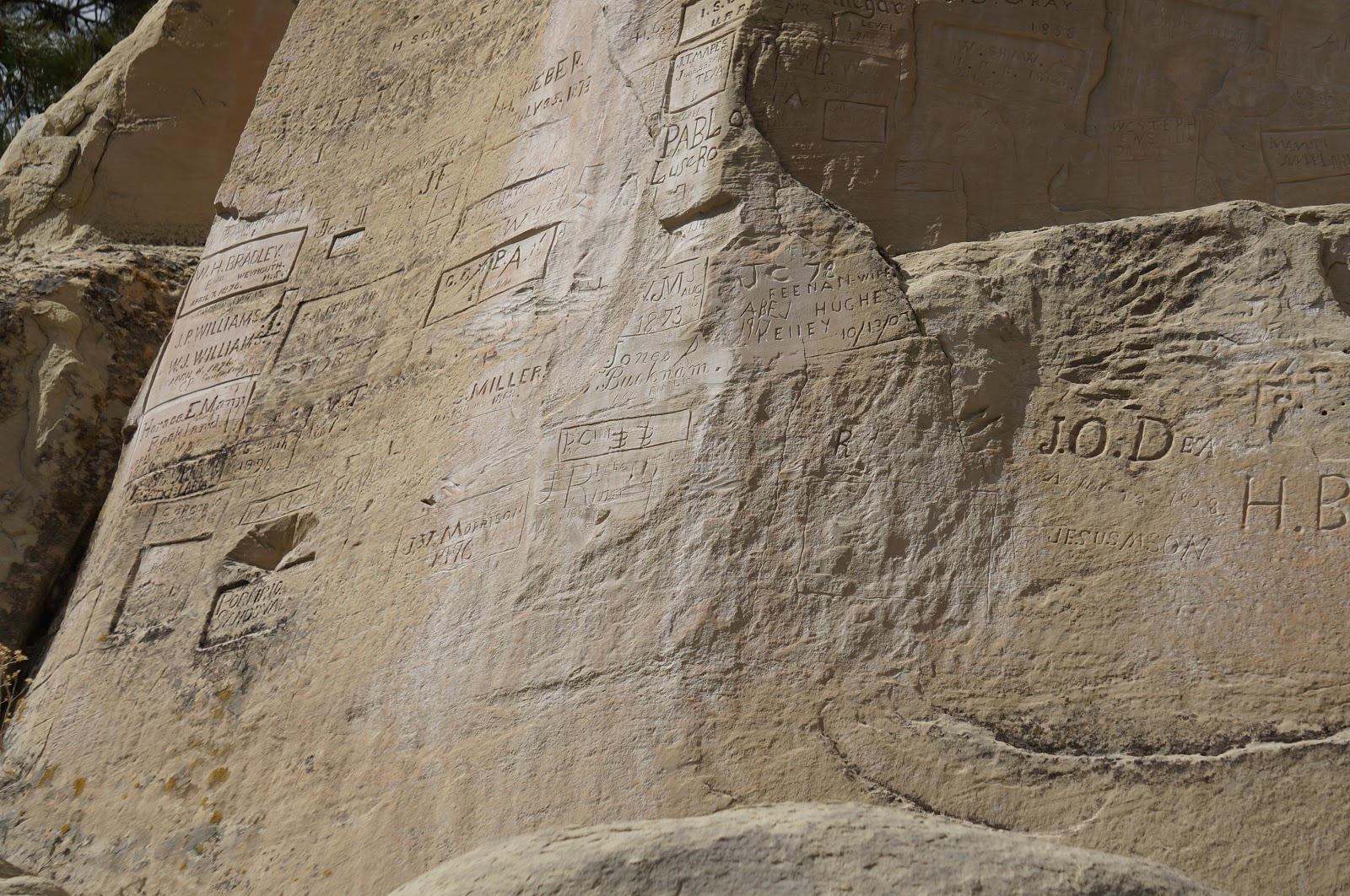
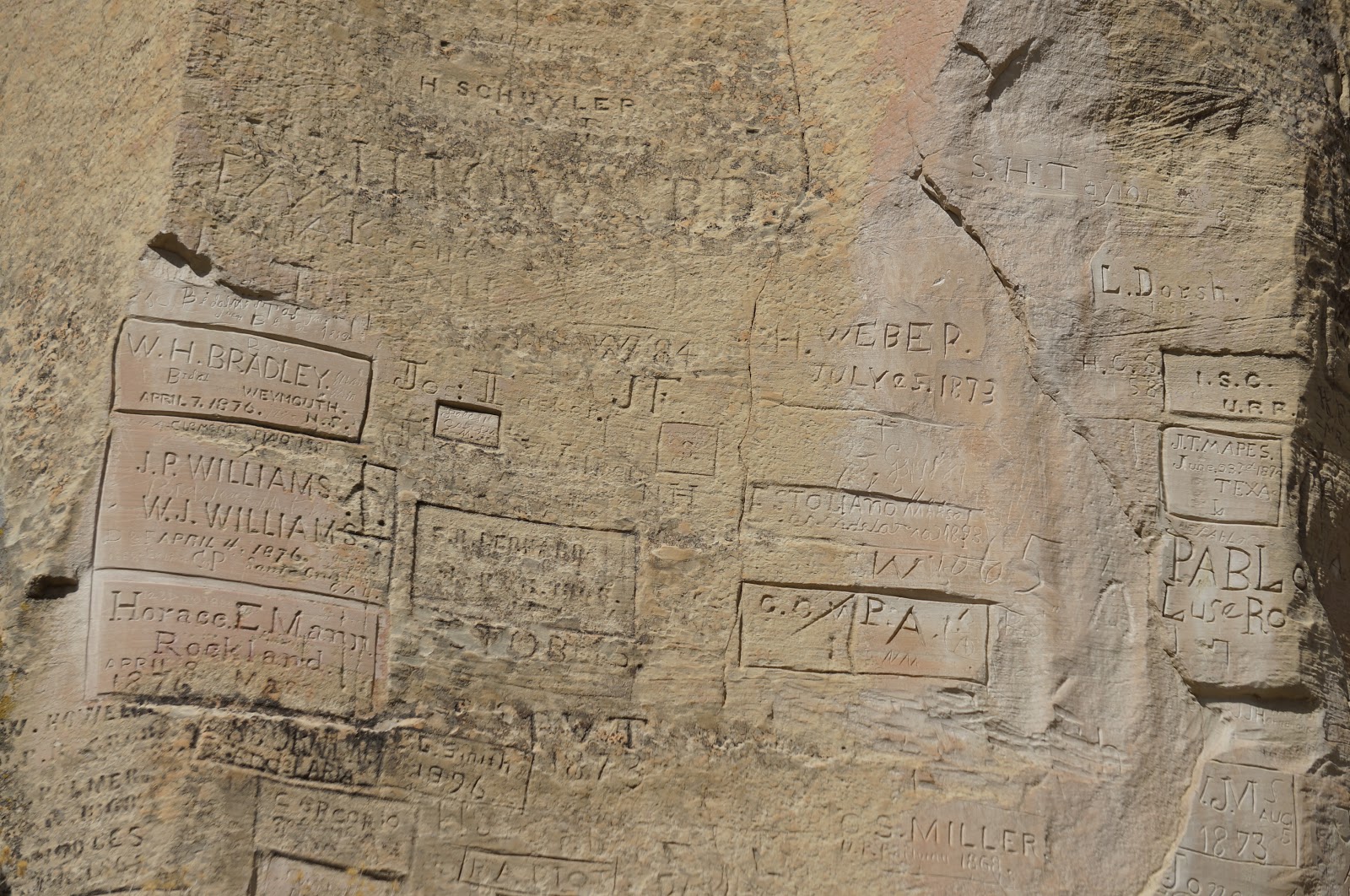
And so it continued, over 2,000 inscriptions, all telling tales as passers-by sought to leave their mark!
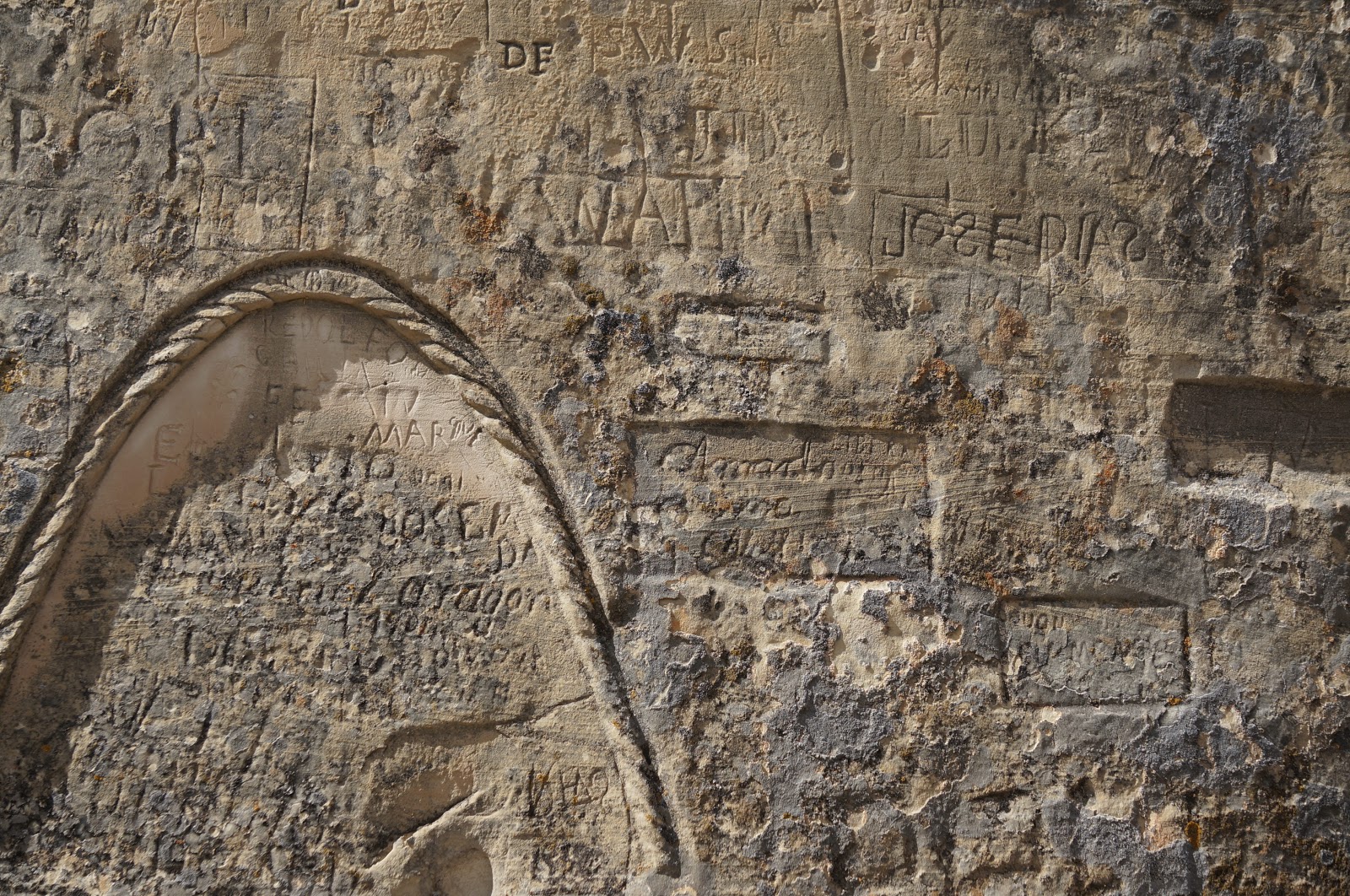
Continuing past Inscription Rock, a strenuous hike on the Mesa Top Trail leads to the top of El Morro National Monument.
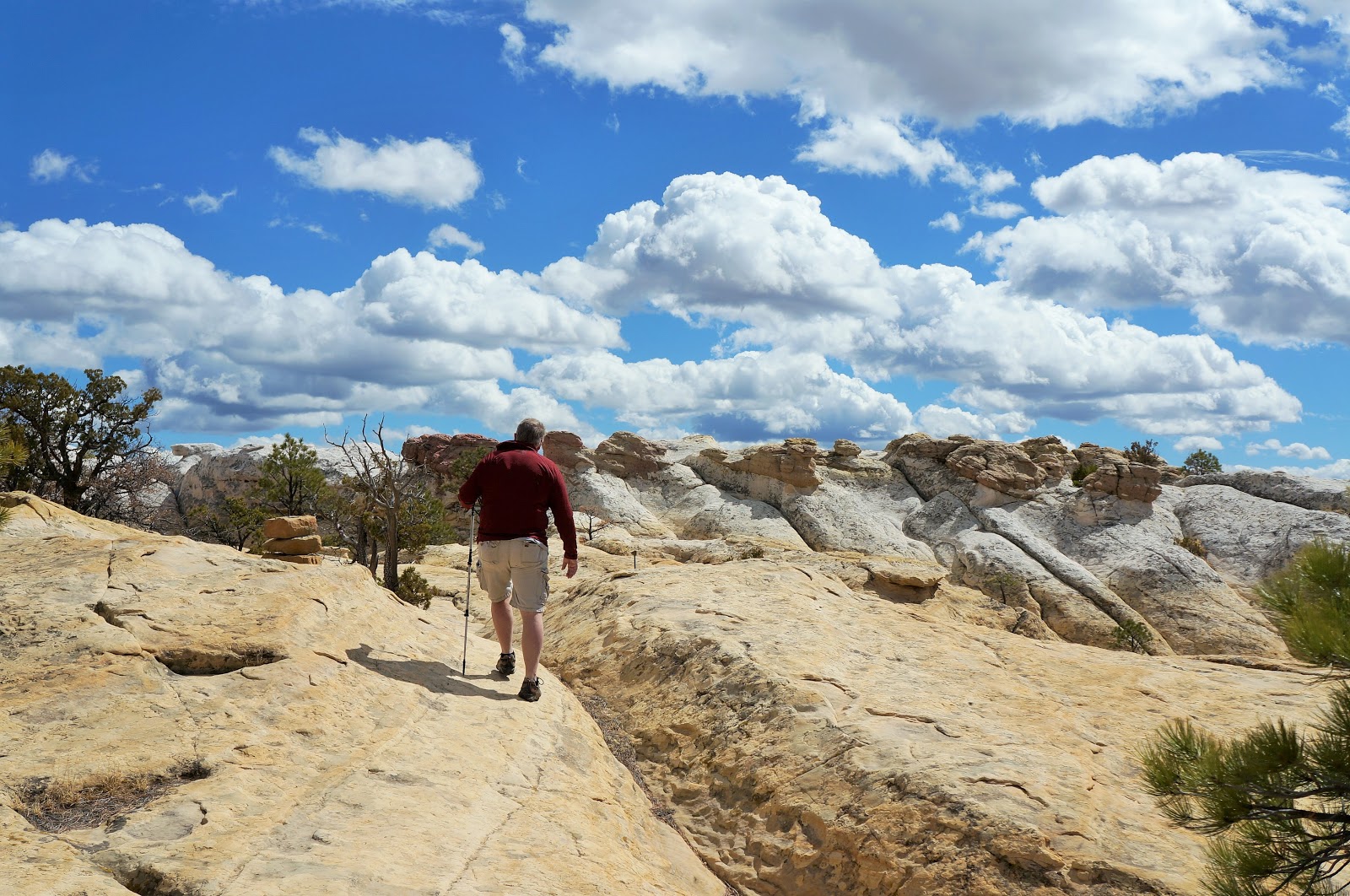
#cornerphotobomb
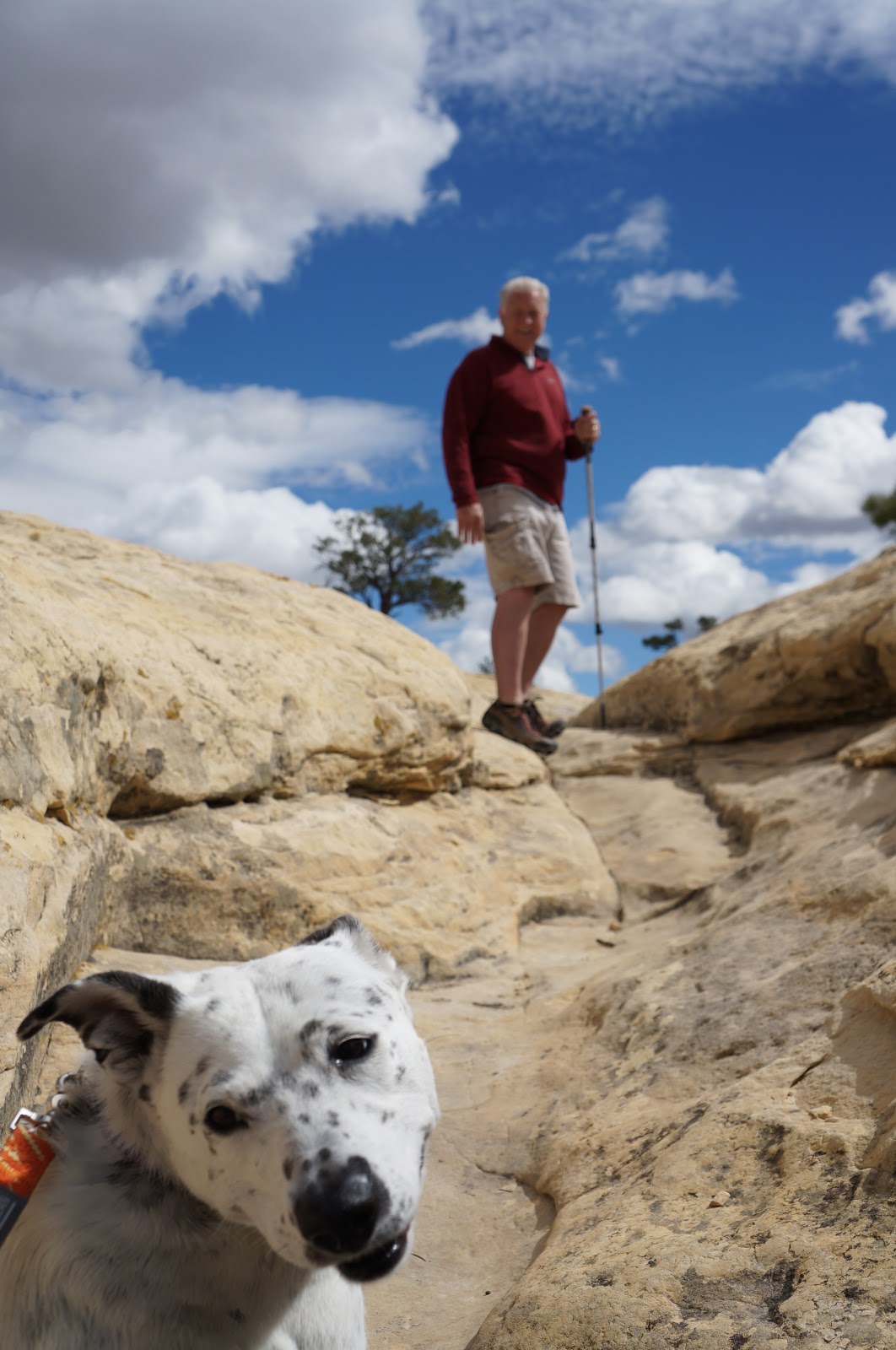
Made it!

What is difficult to convey in these photos is how ALONE we were. Gloriously, spectacularly, the only ones on the top of the mountain. Here is where we relaxed with a picnic lunch, high above the desert floor:
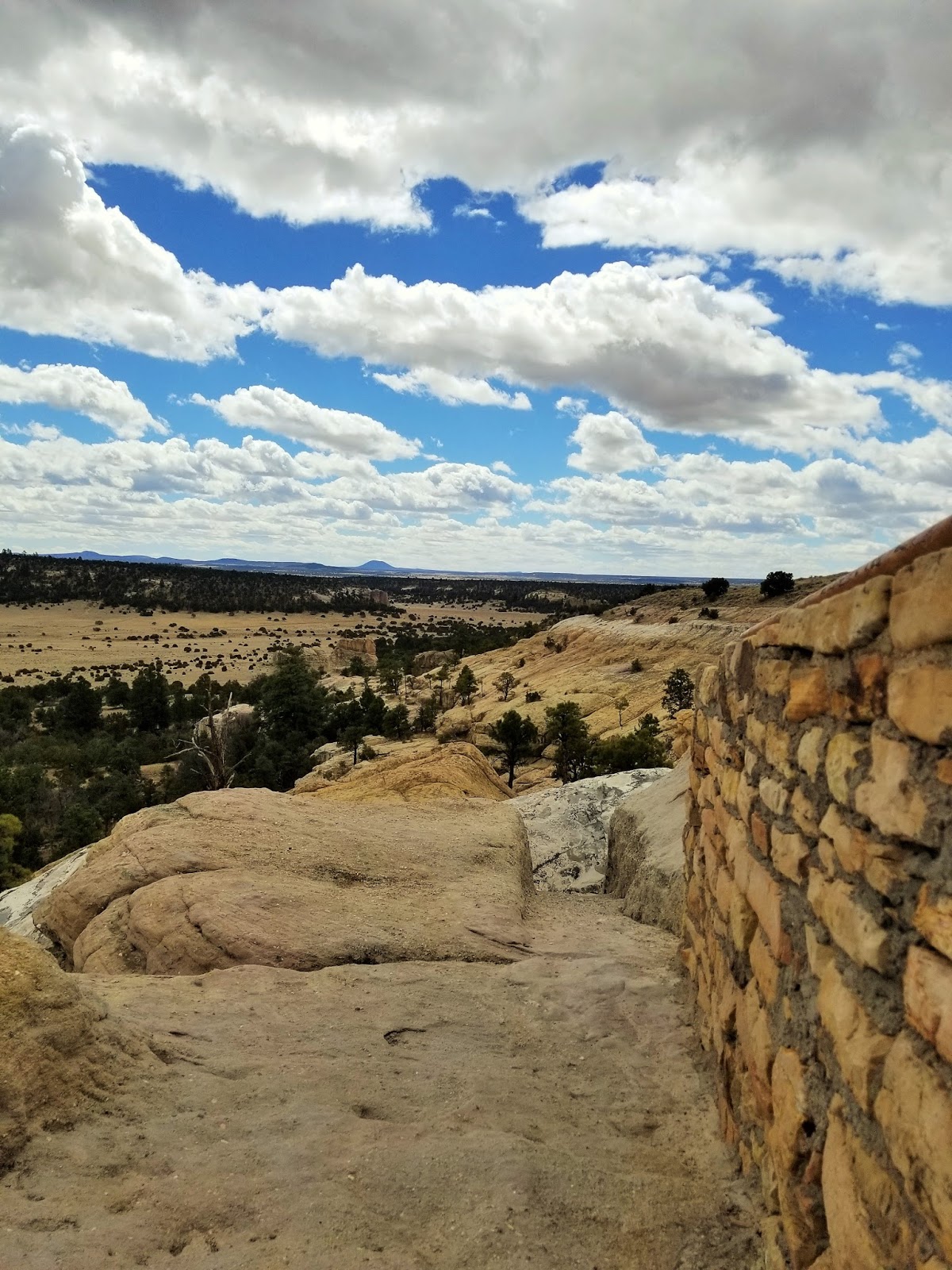
Now, for scale, see if you can find the brick wall on the right in the photo above, in the wide shot below! That’s where we hung out, just me, Philip, Sprinkles, the sun and the breeze!

Besides our ham sandwiches, also to be found at the very top of El Morro is “Atsinna,” the remains of a 700-year-old pueblo. Atsinna means “place of writings on the rock.”
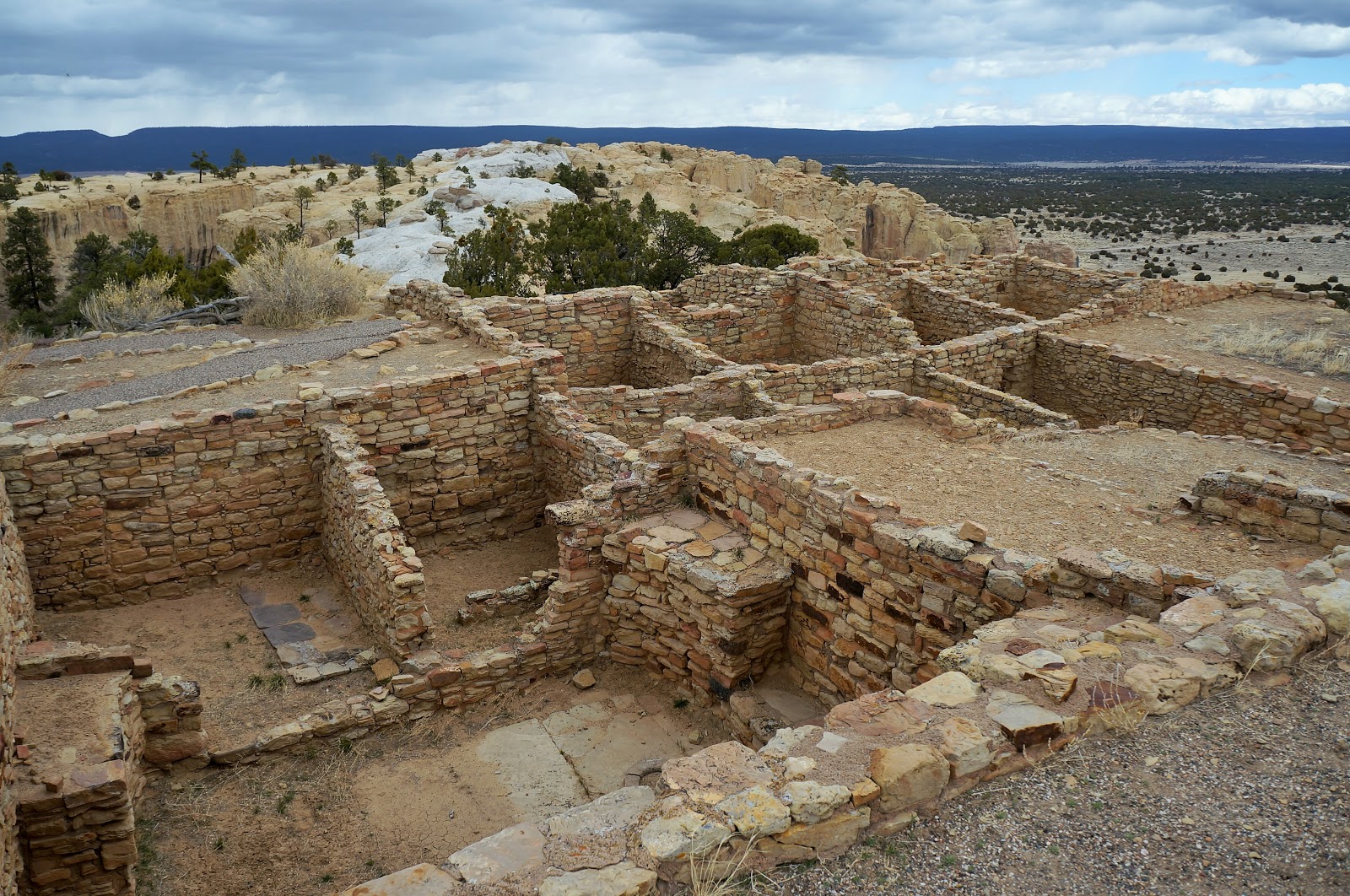
Occupied from around 1275 to 1400, the entire pueblo was at least 875 multi-storied, connected rooms that housed up to 1,500 people at its peak population.

We could get THAT CLOSE to the ruins! It was extraordinarily special, for humans AND dogs.
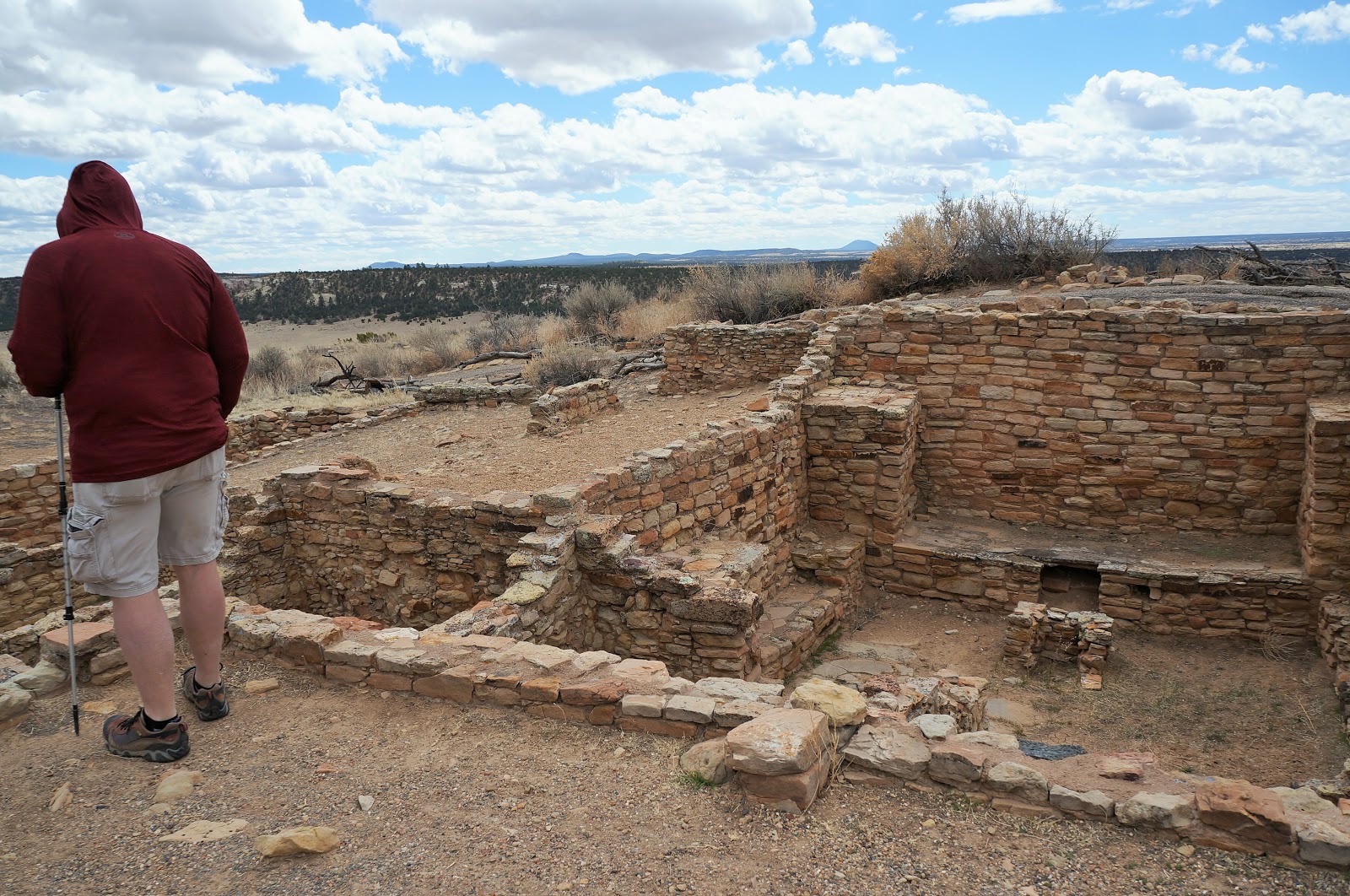
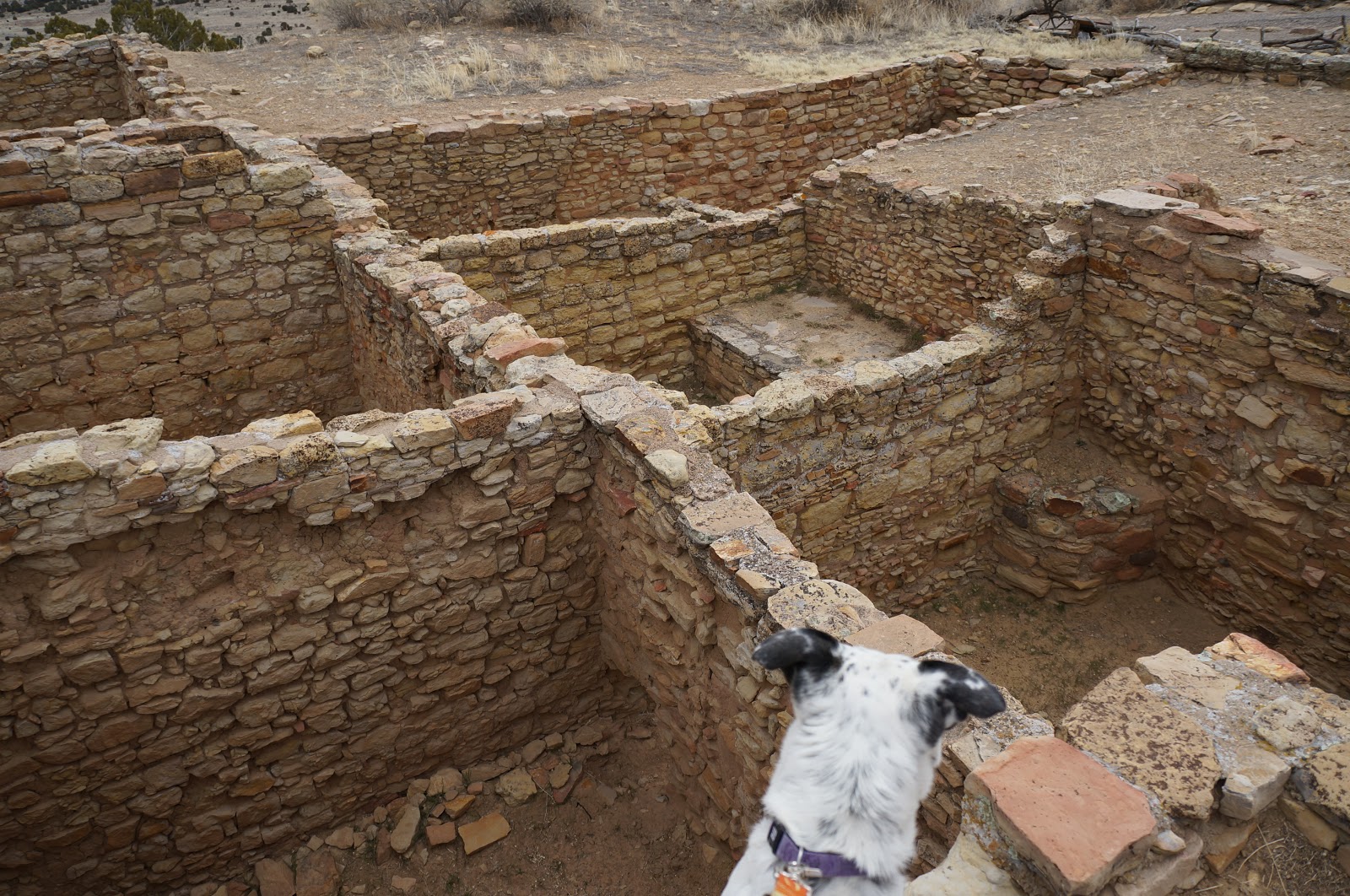
Only 18 of the 875+ rooms, plus a round and square kiva, plus numerous artifacts, were excavated in the 1950’s.

Since then, the focus has shifted from excavation to preservation.

El Morro is a little-known, rarely-visited treasure not far over the Arizona/New Mexico border.
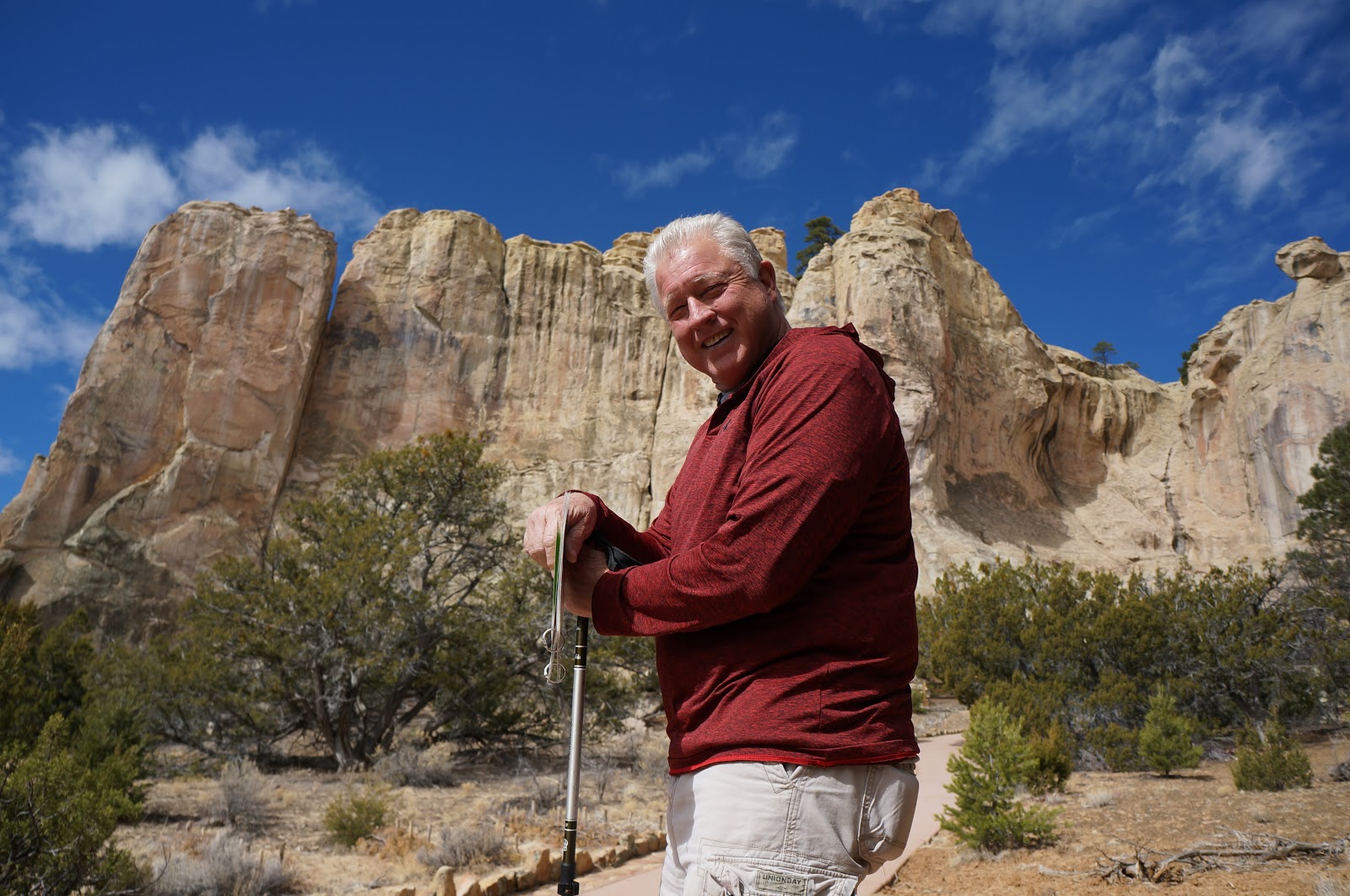
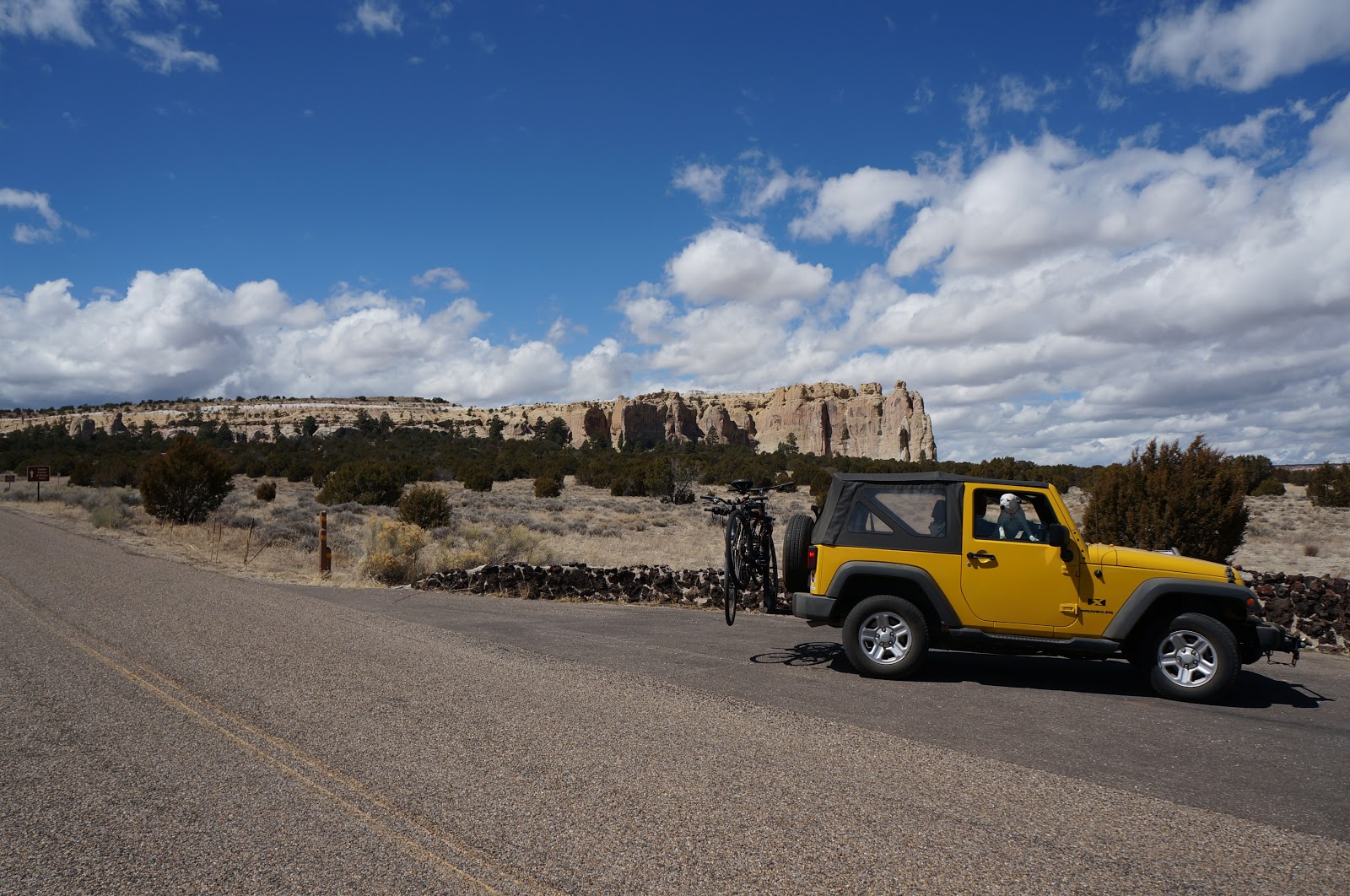
Even the Lucky Charm’s accommodations have been naturally beautiful in this part of the country.
For example, the Cochiti Lake Campground … can you spot Lucky Charm — 3rd from left in the back row?
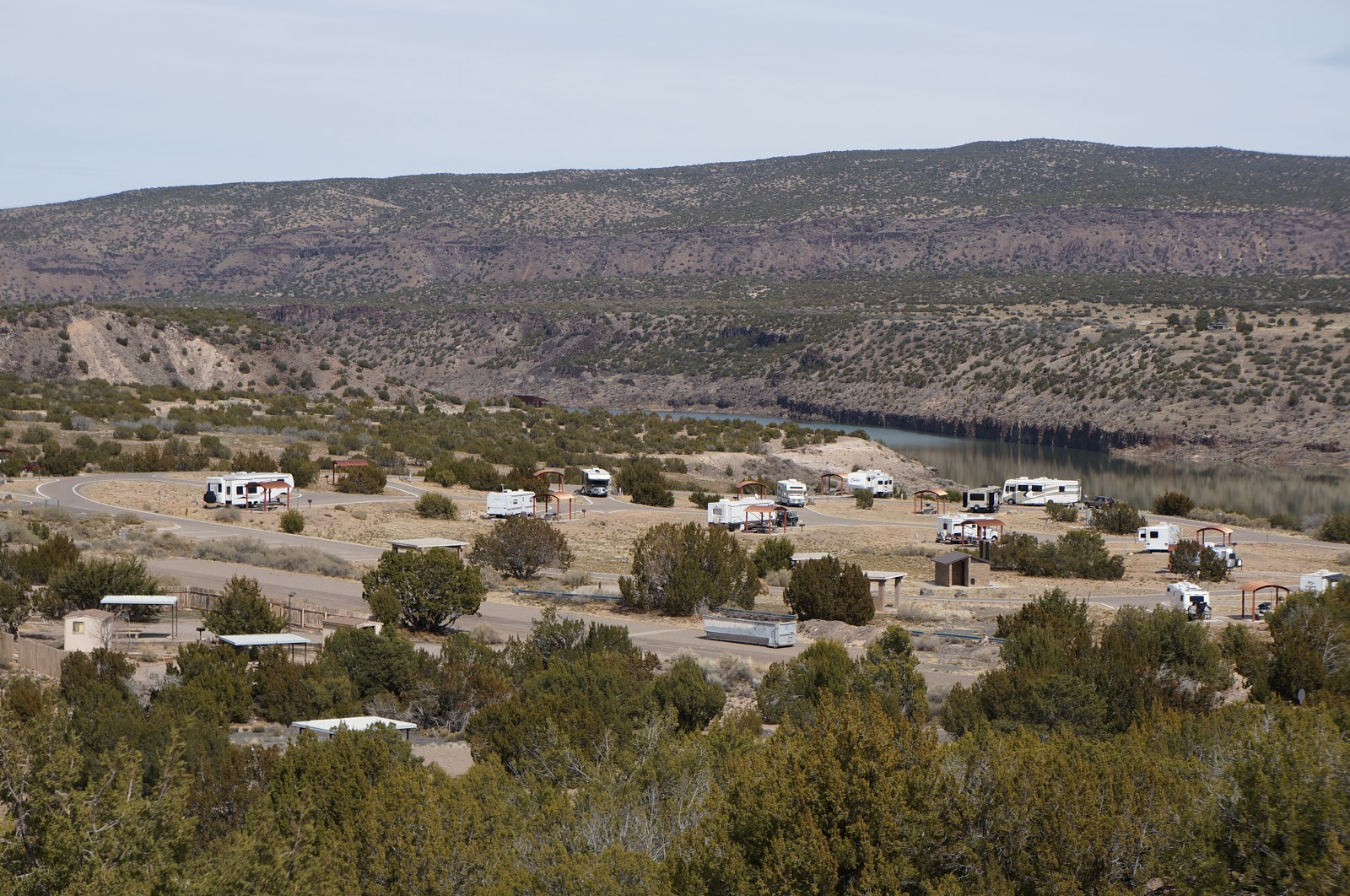
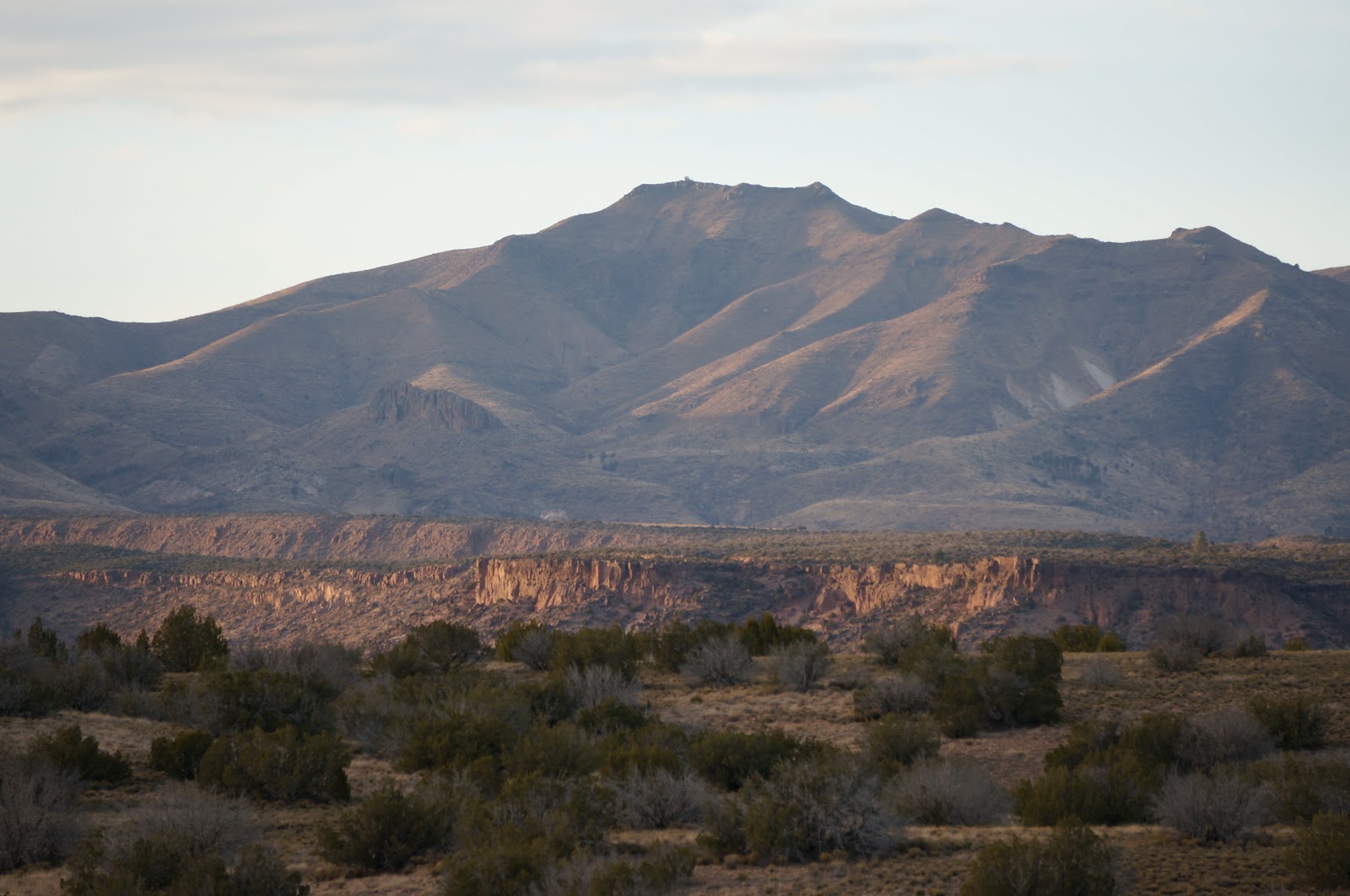
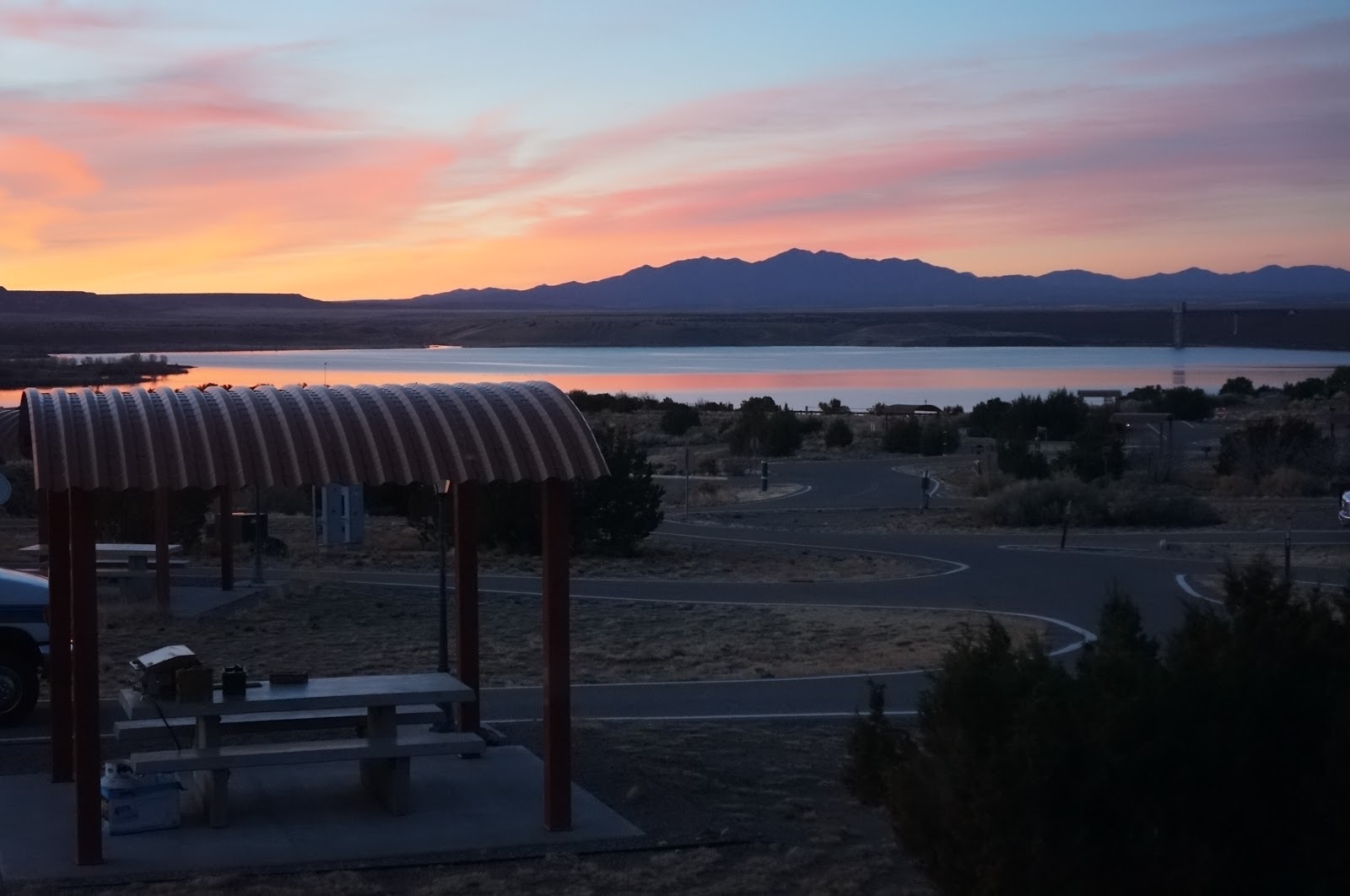
We have to “call” this contest … God’s Artwork wins!
As we chugga-chugga-choo-choo our way back home ….
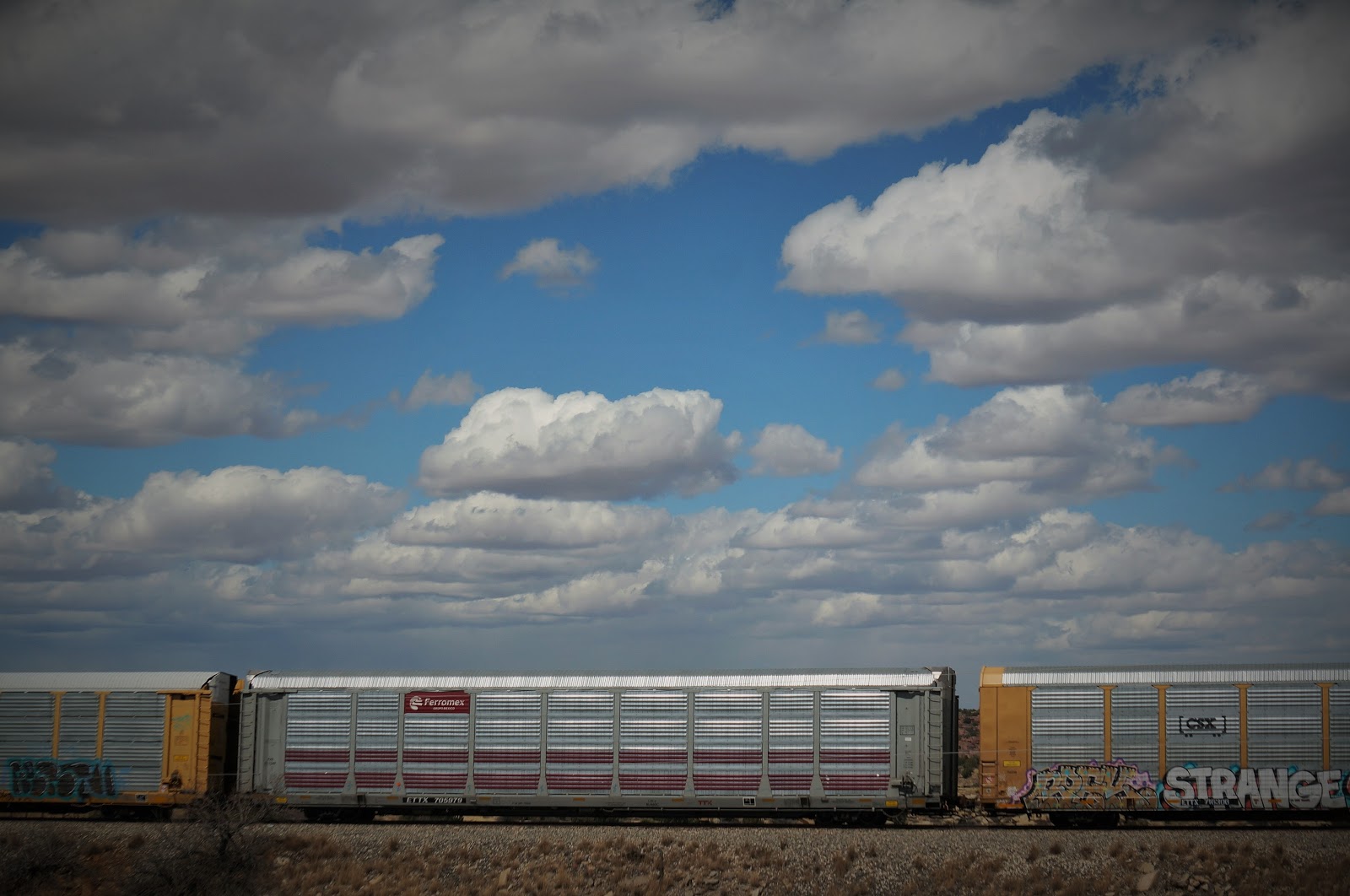
we’ve got one more National Park to visit:
Petrified Forest and Painted Desert, in Northern Arizona!
This seven week adventure is rapidly drawing to a close. Cue the tears!
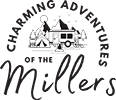



Leave a reply